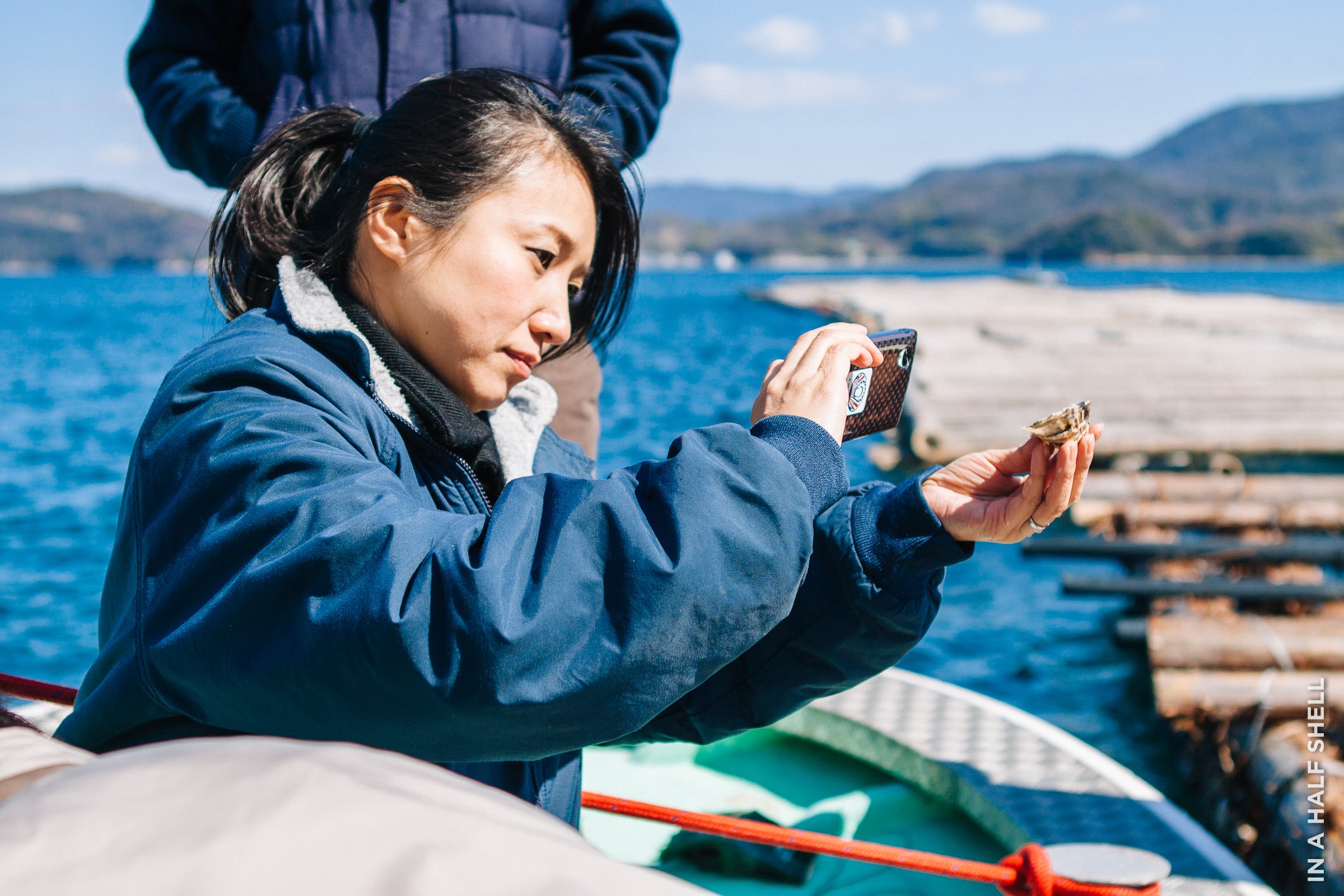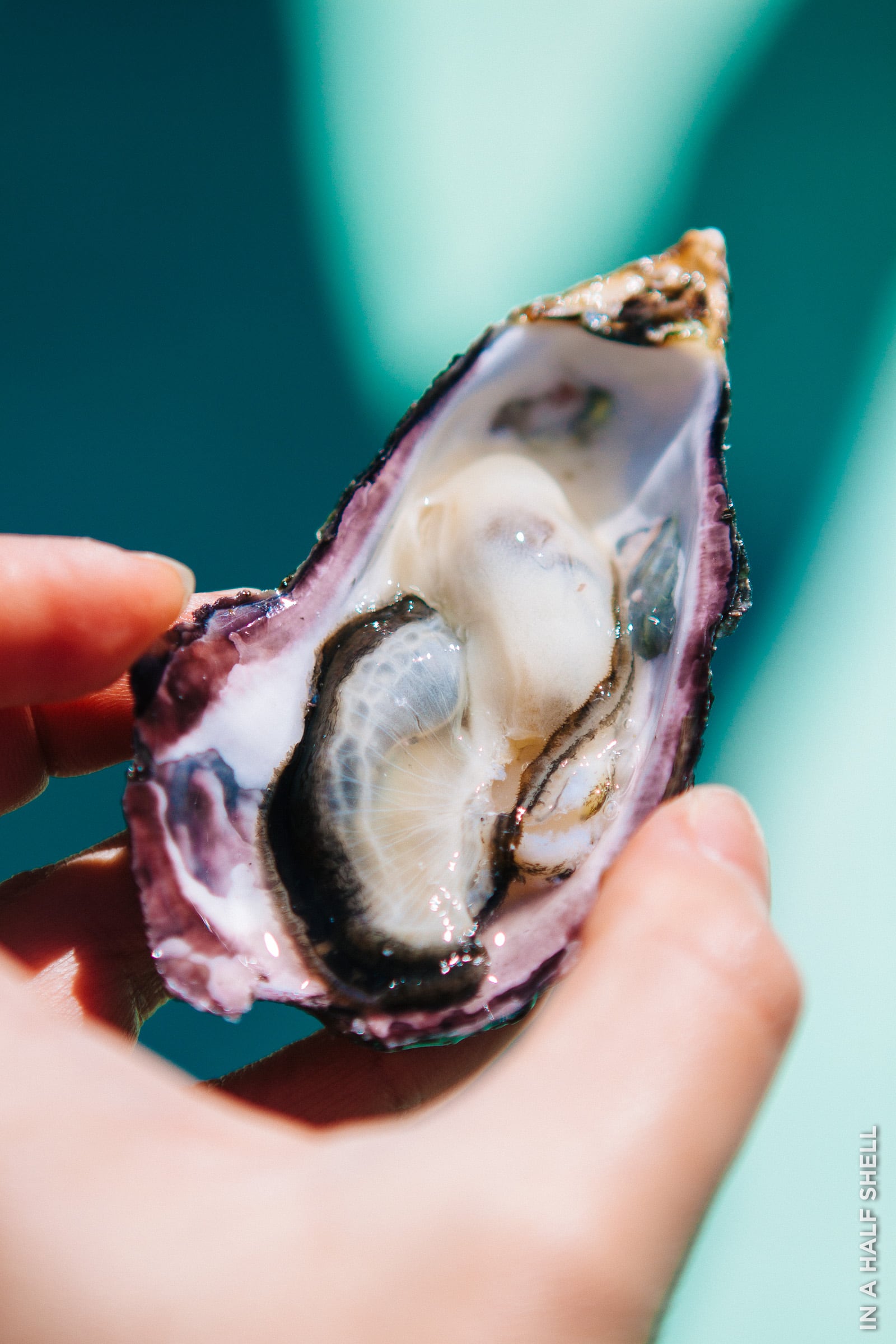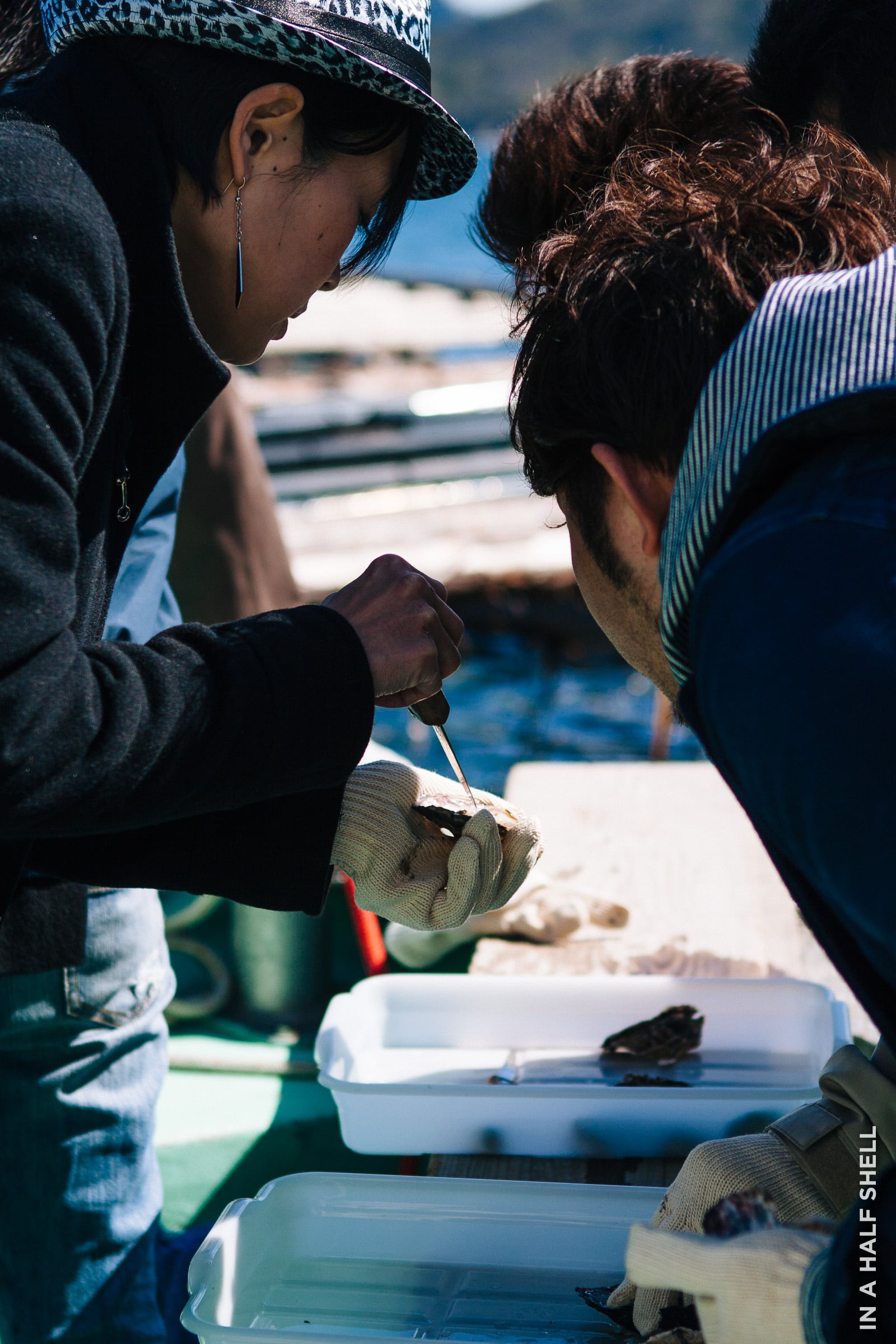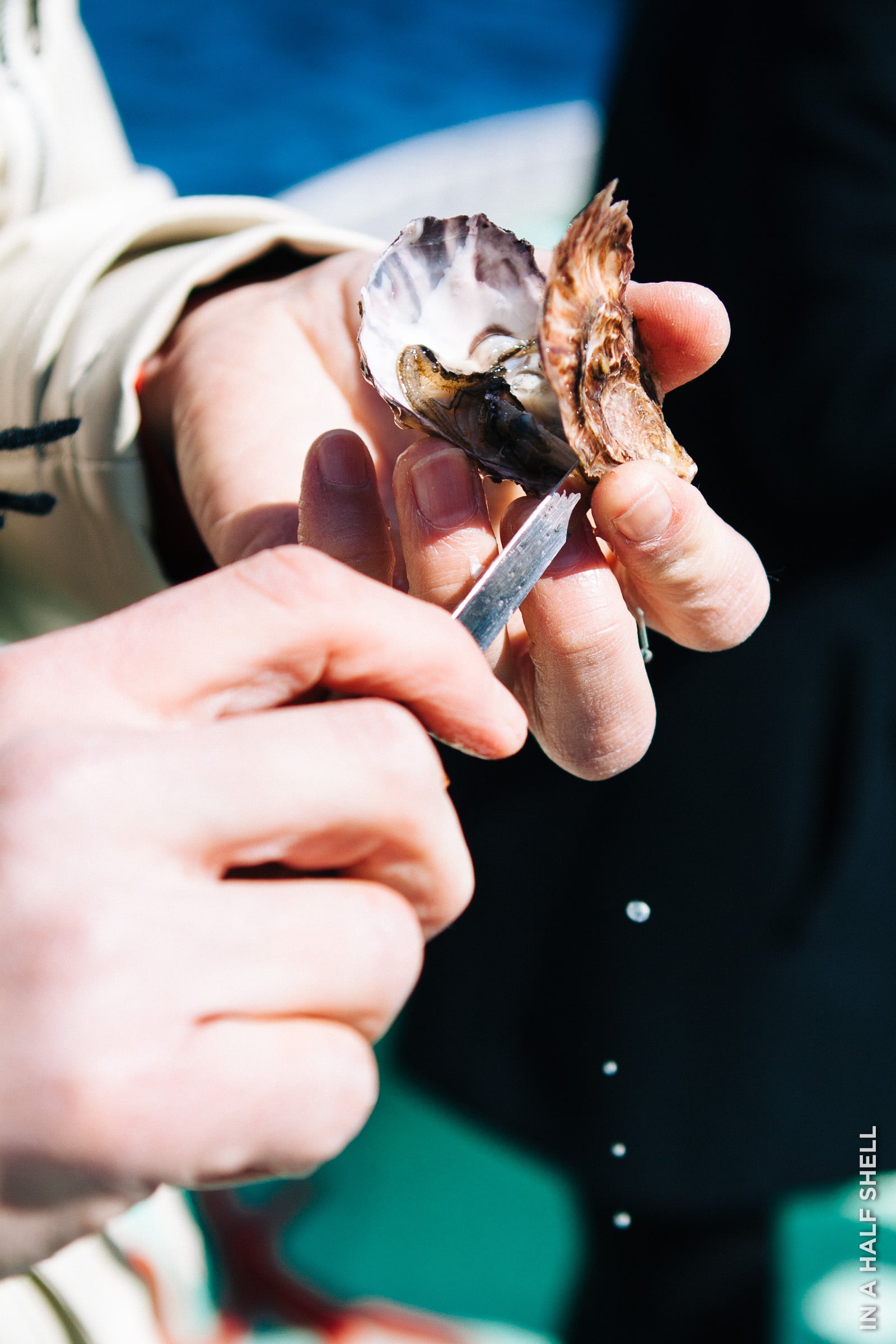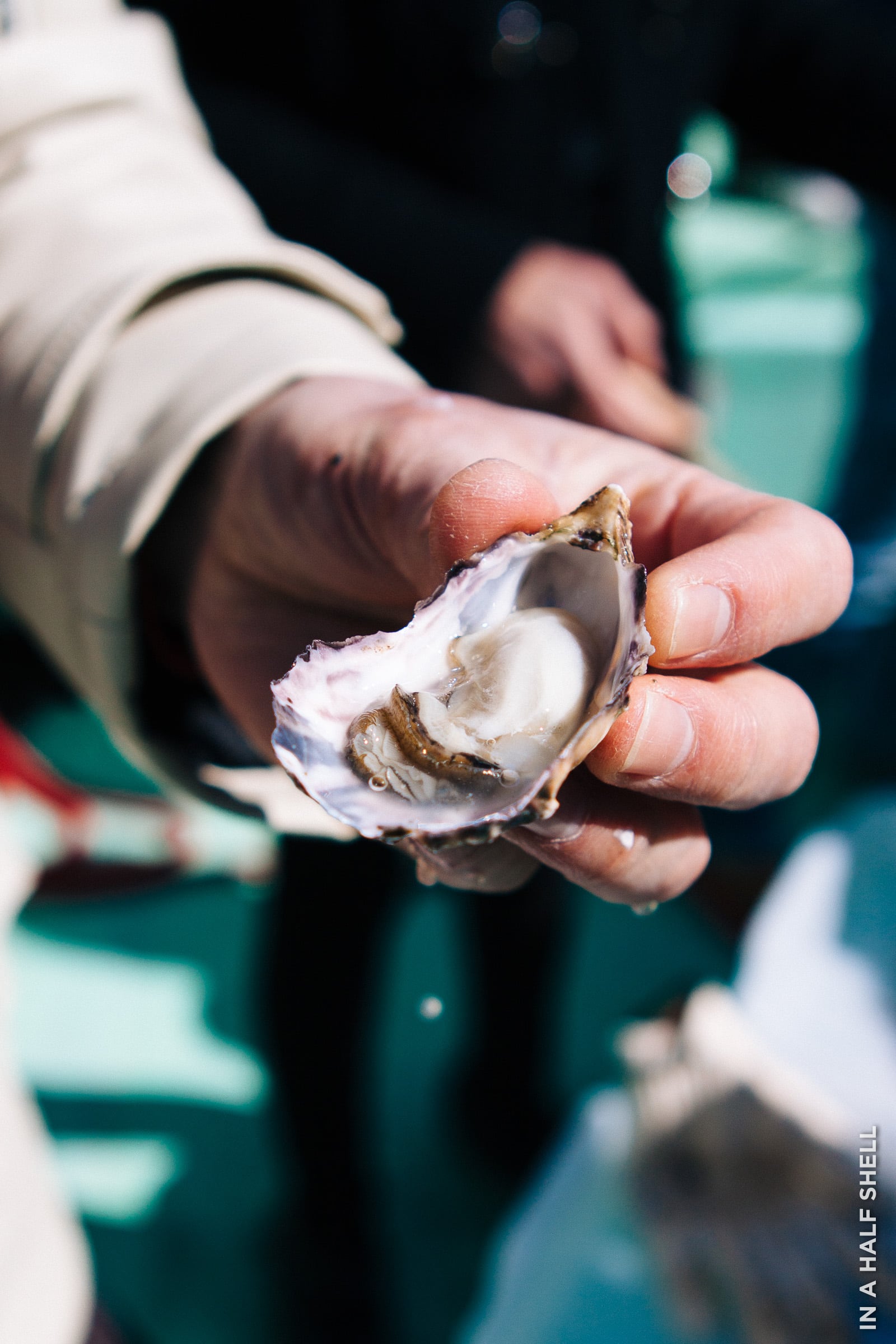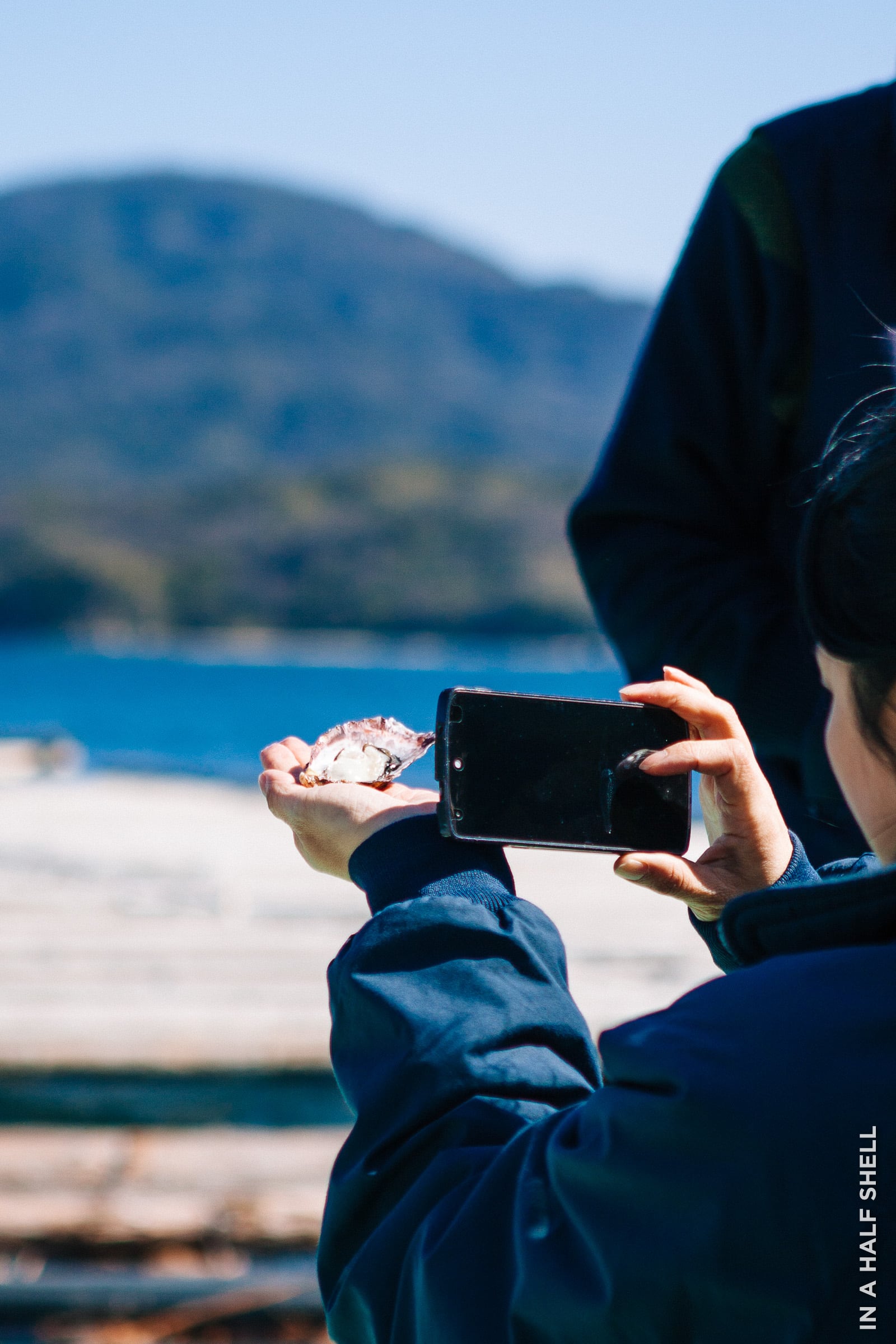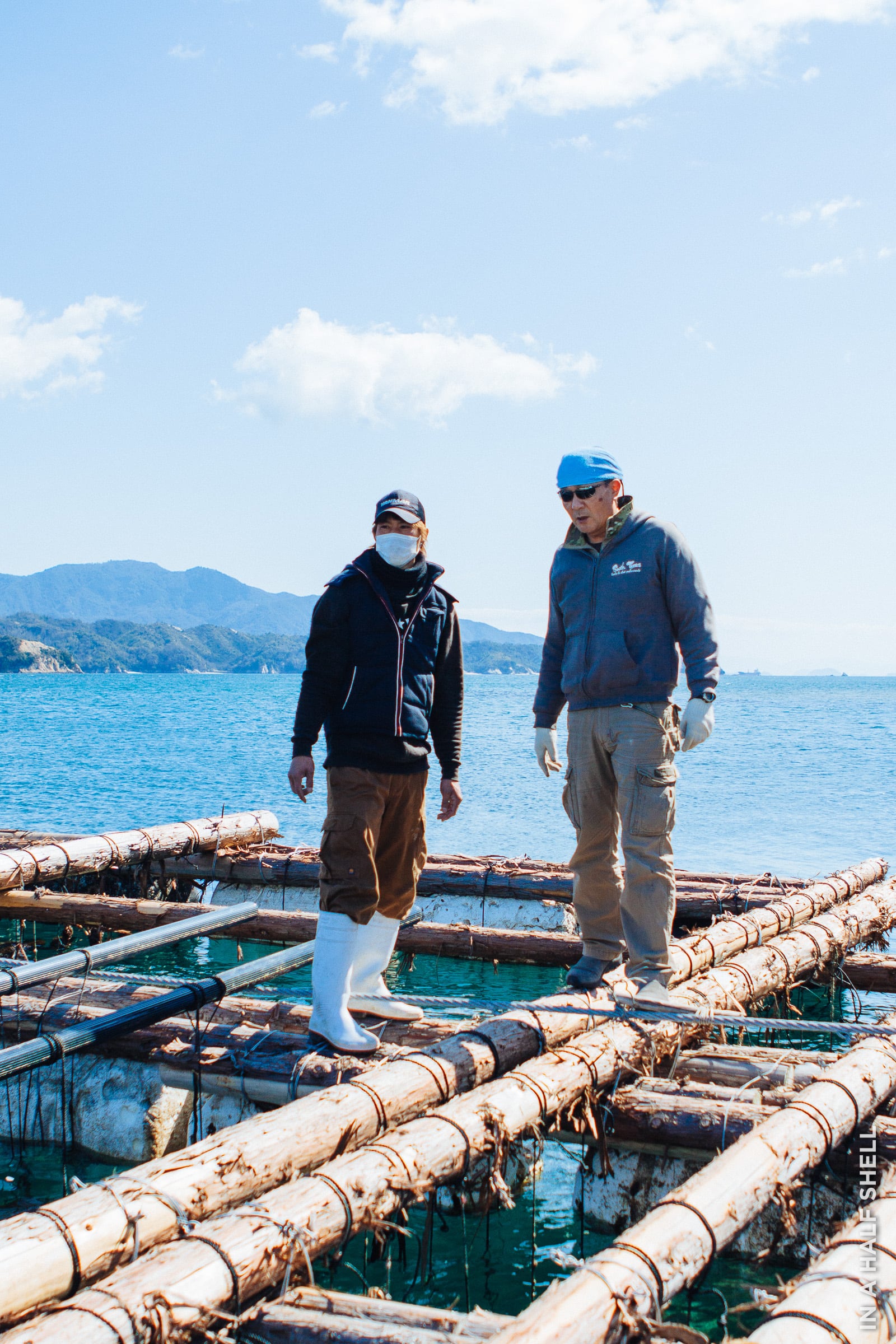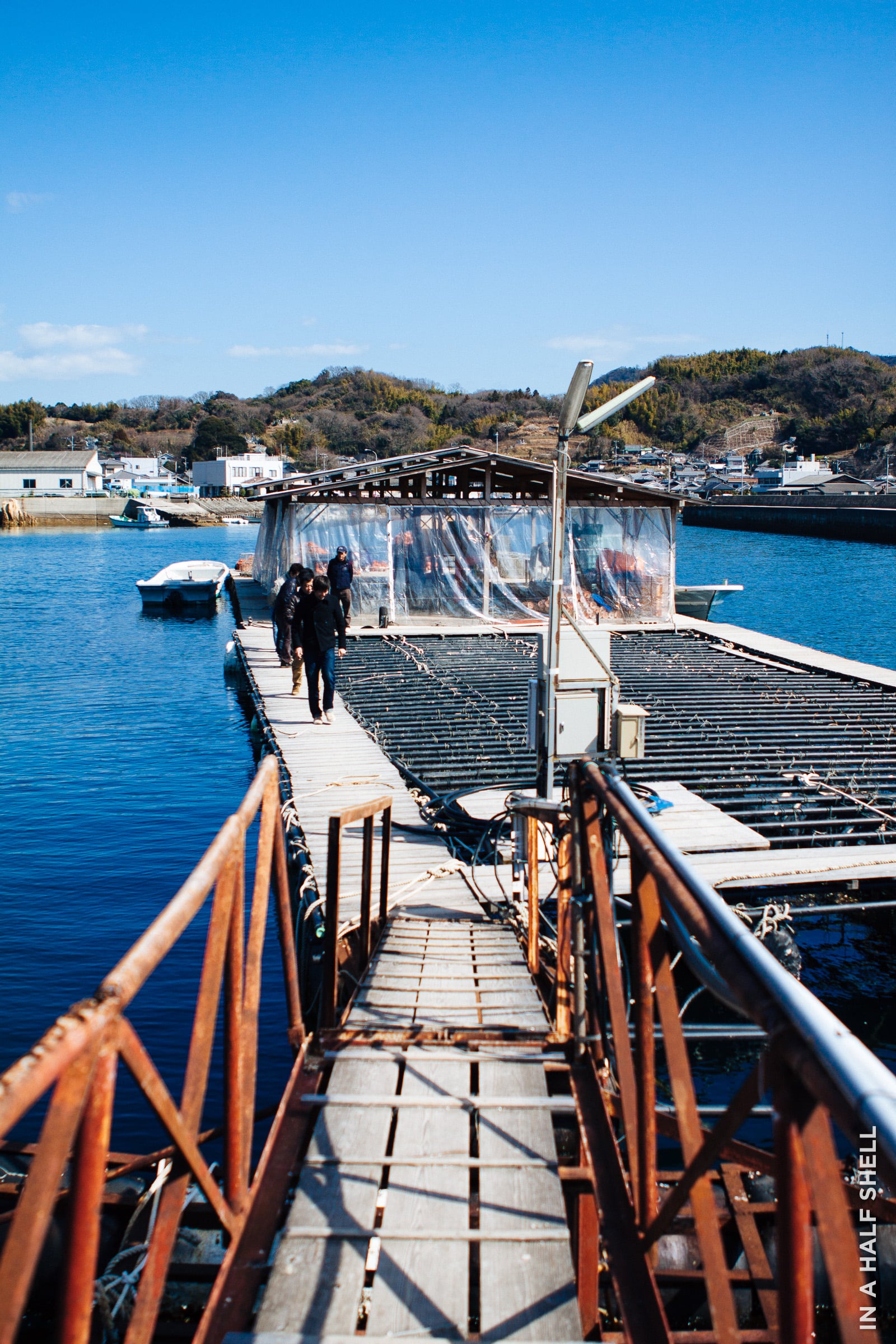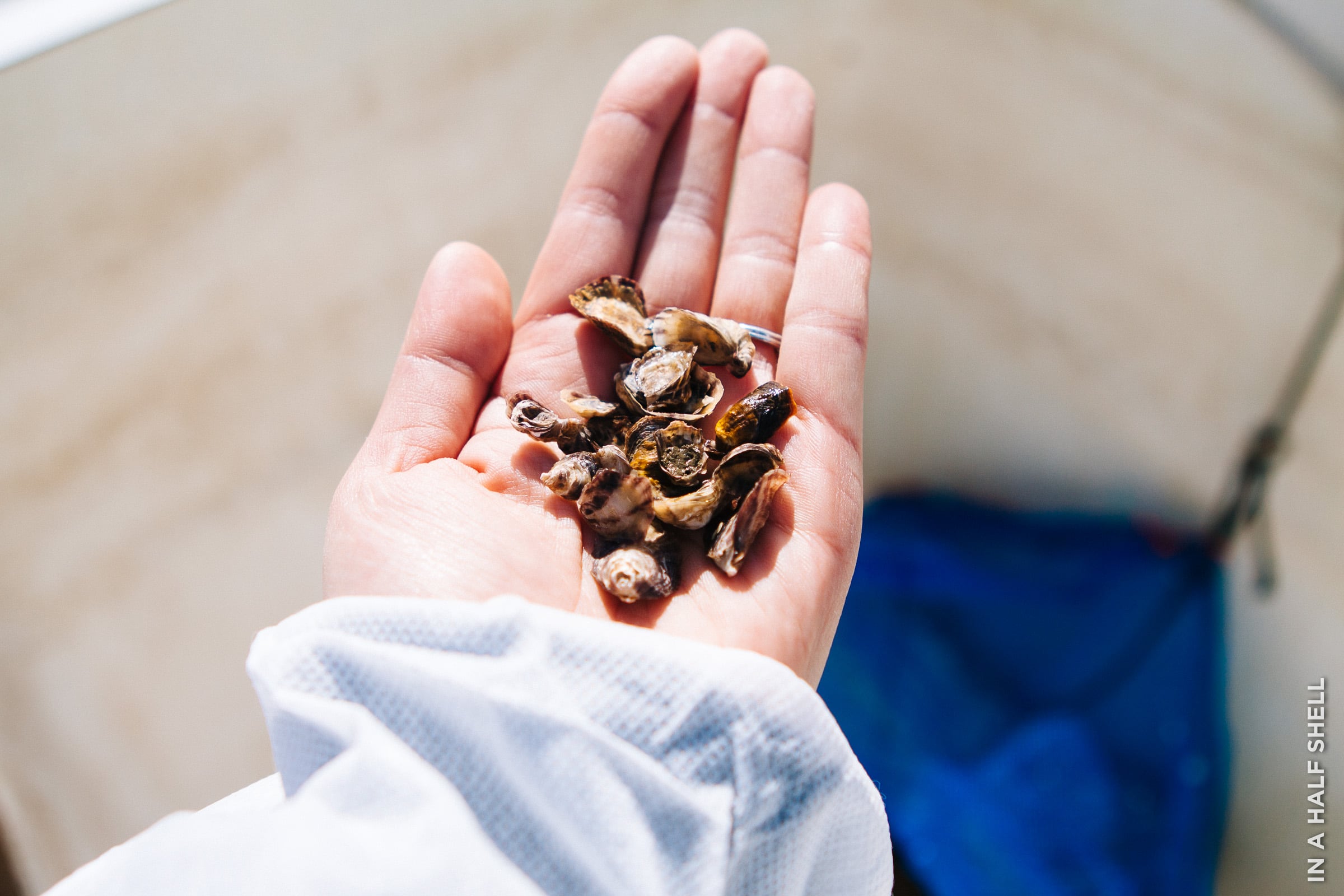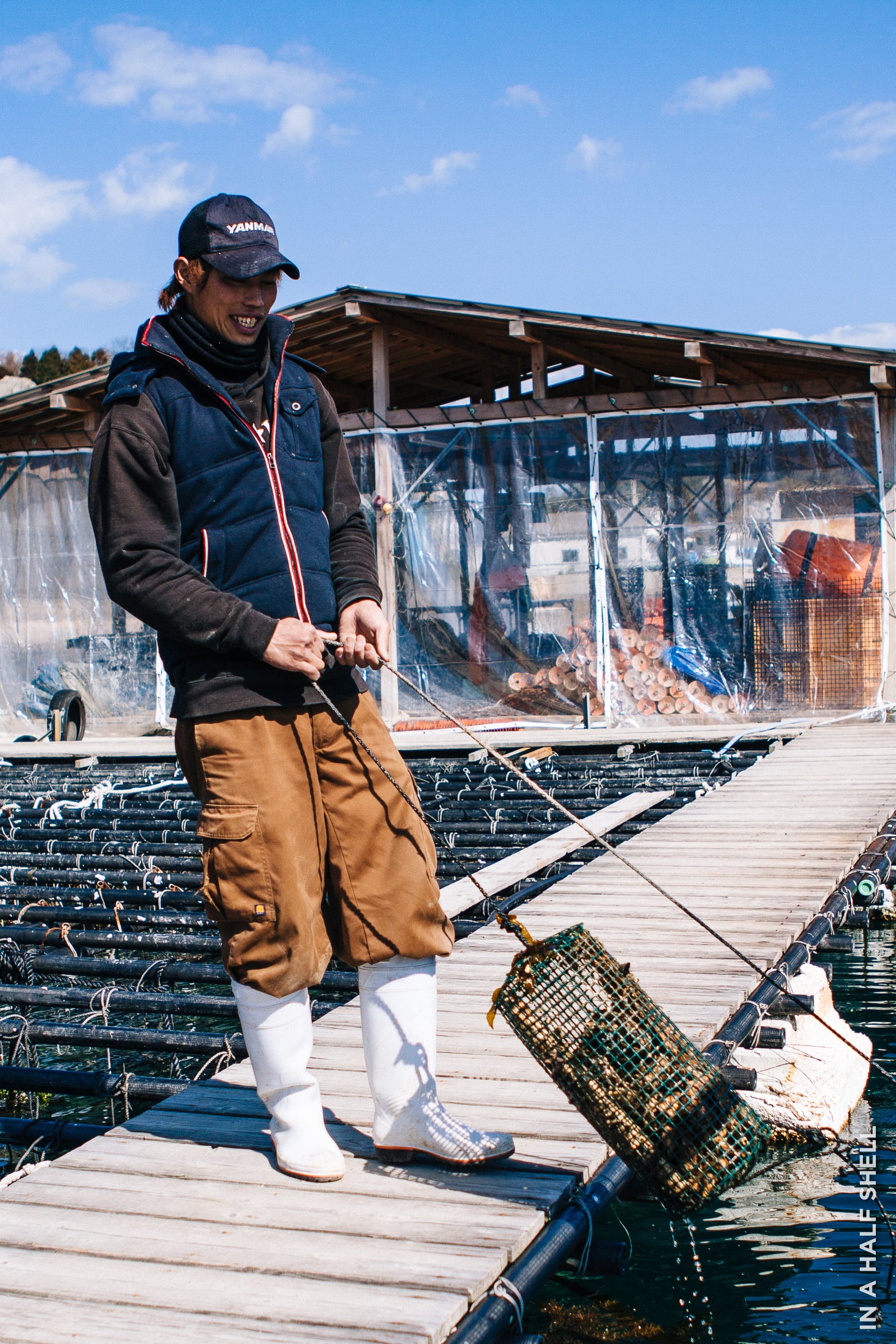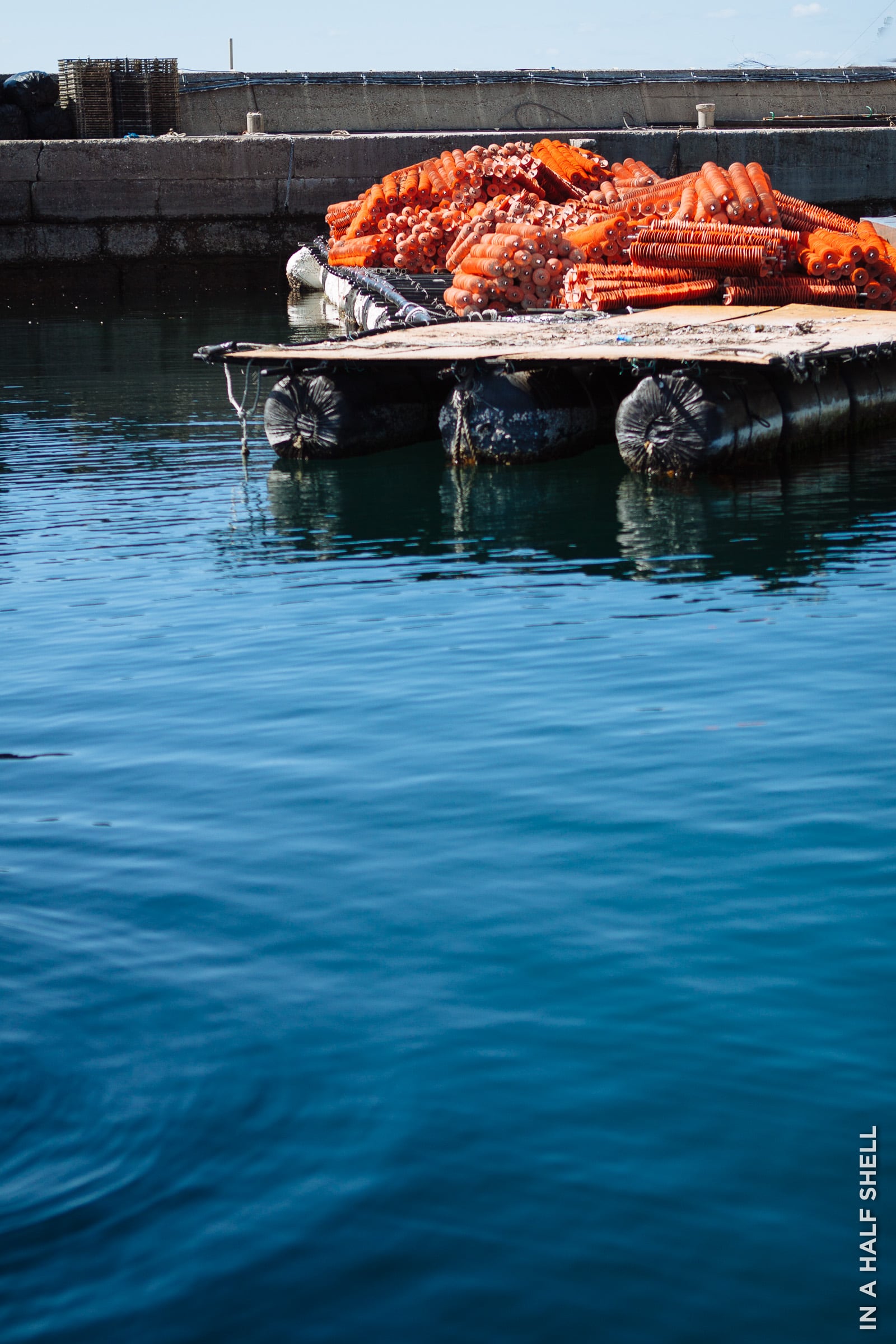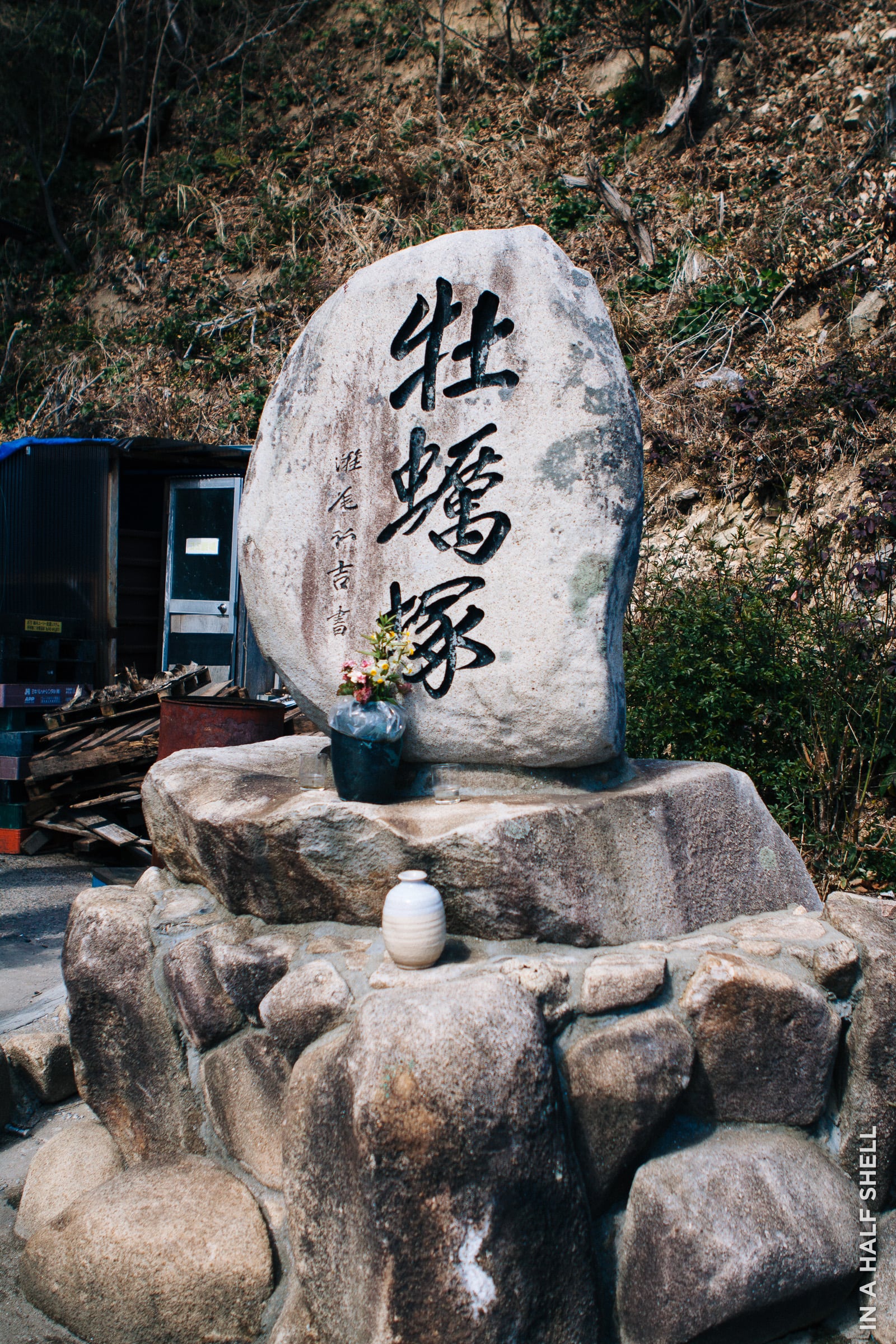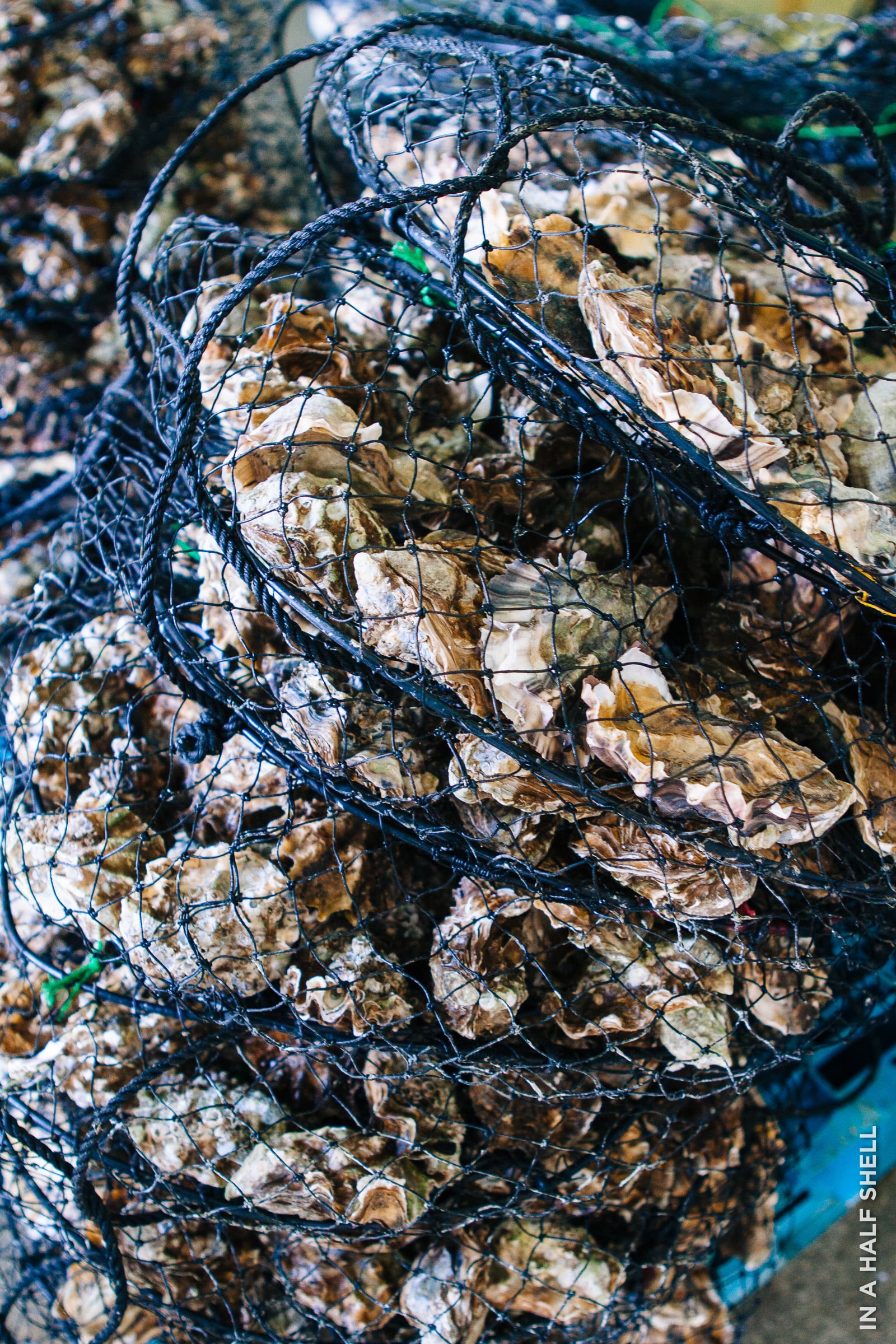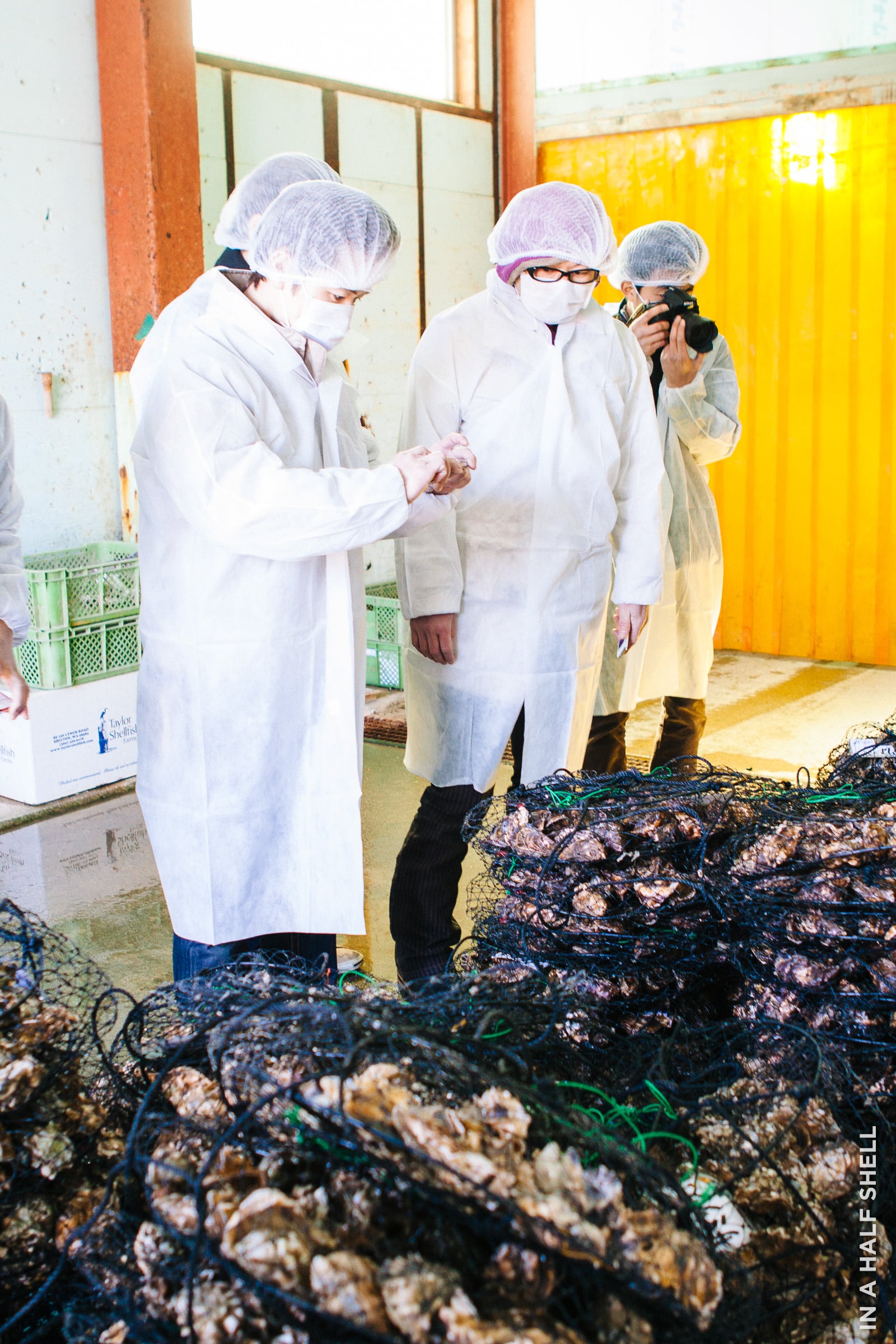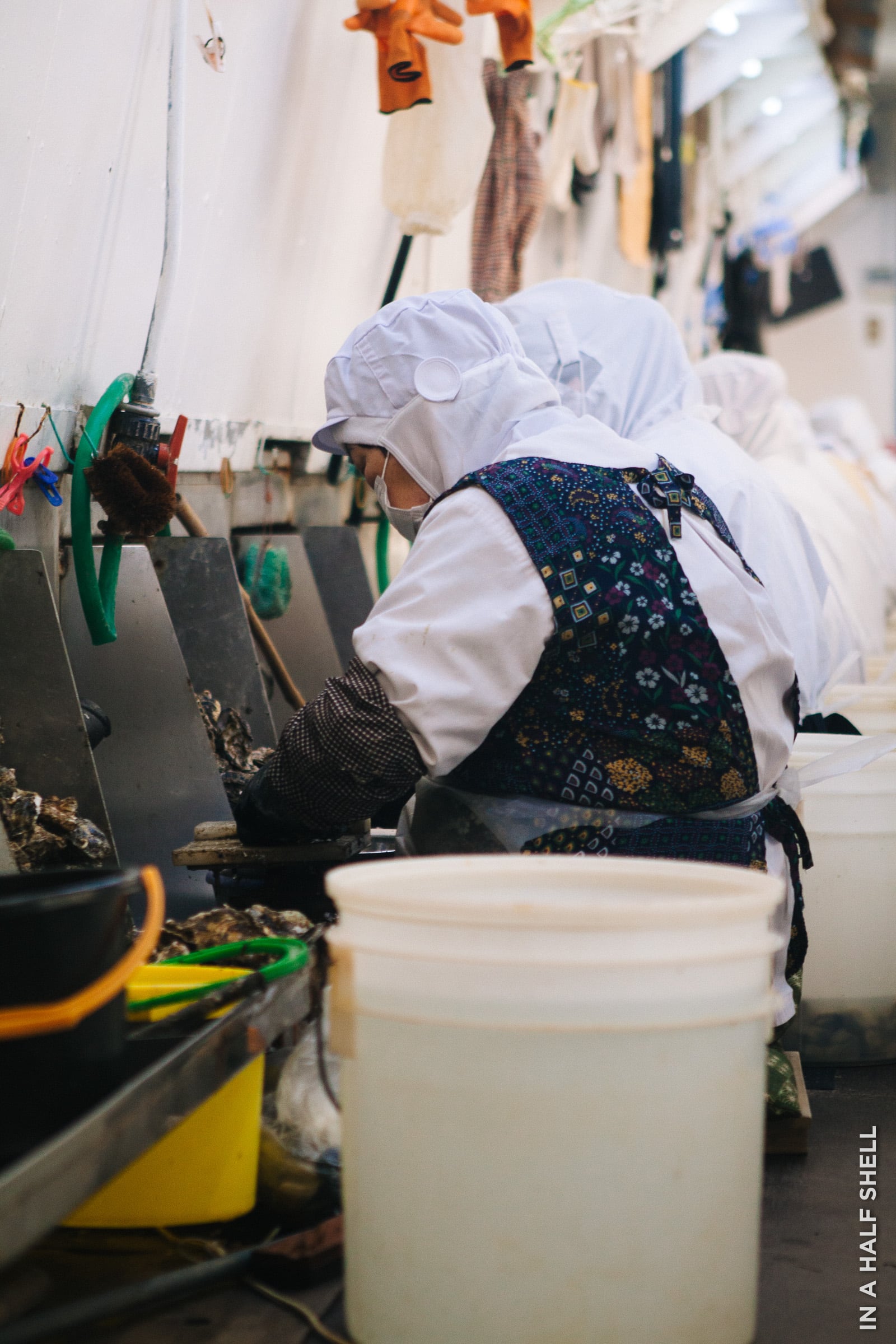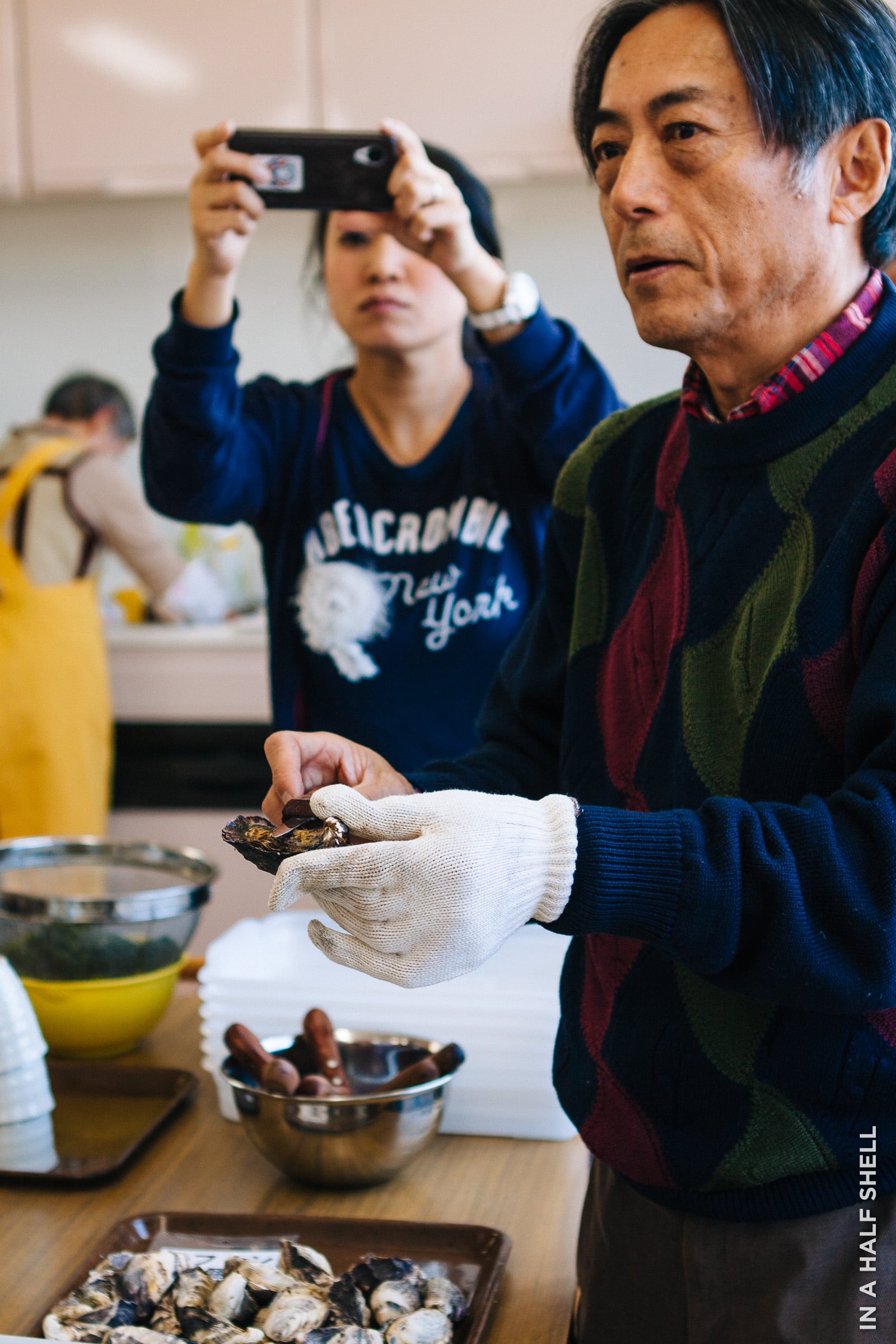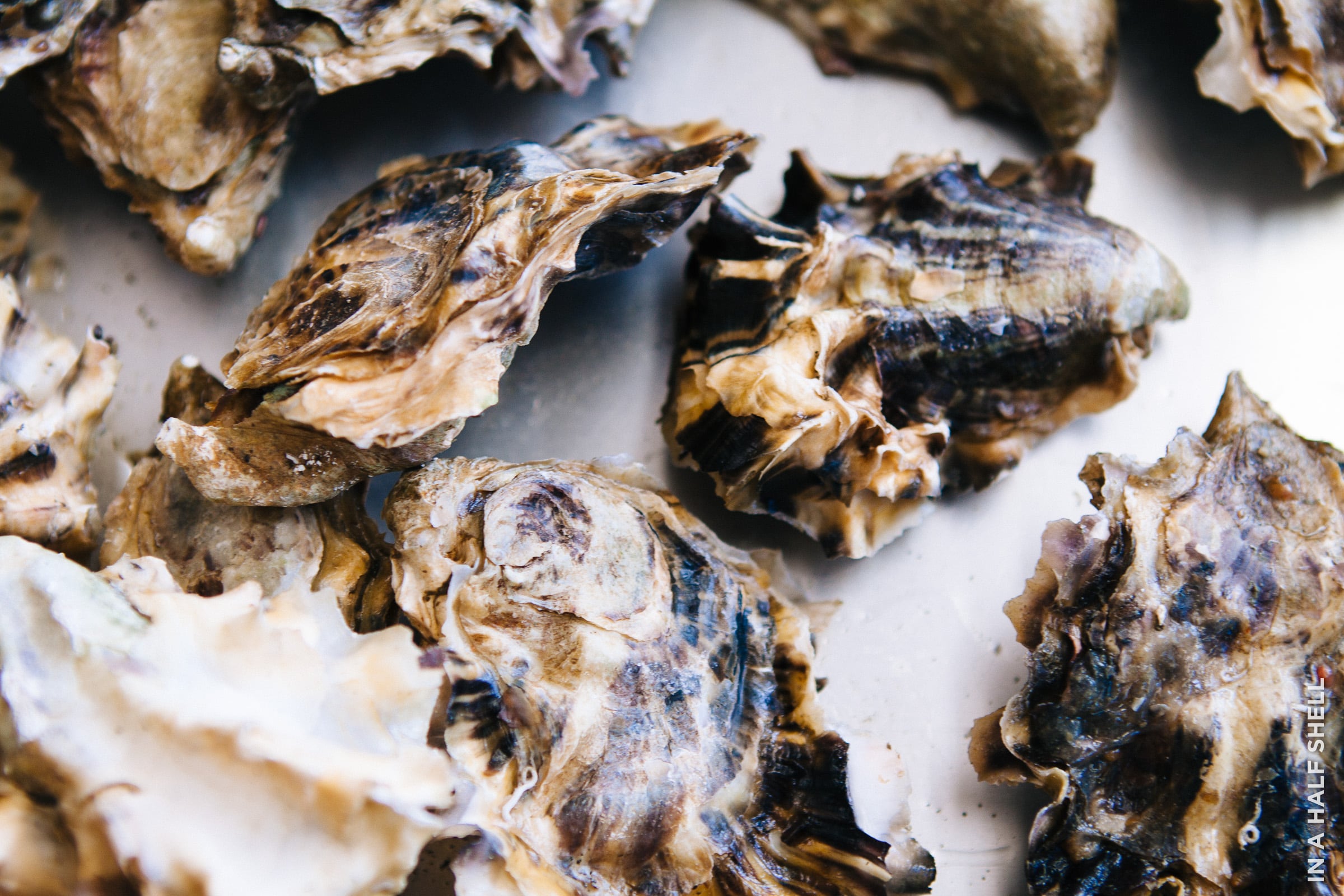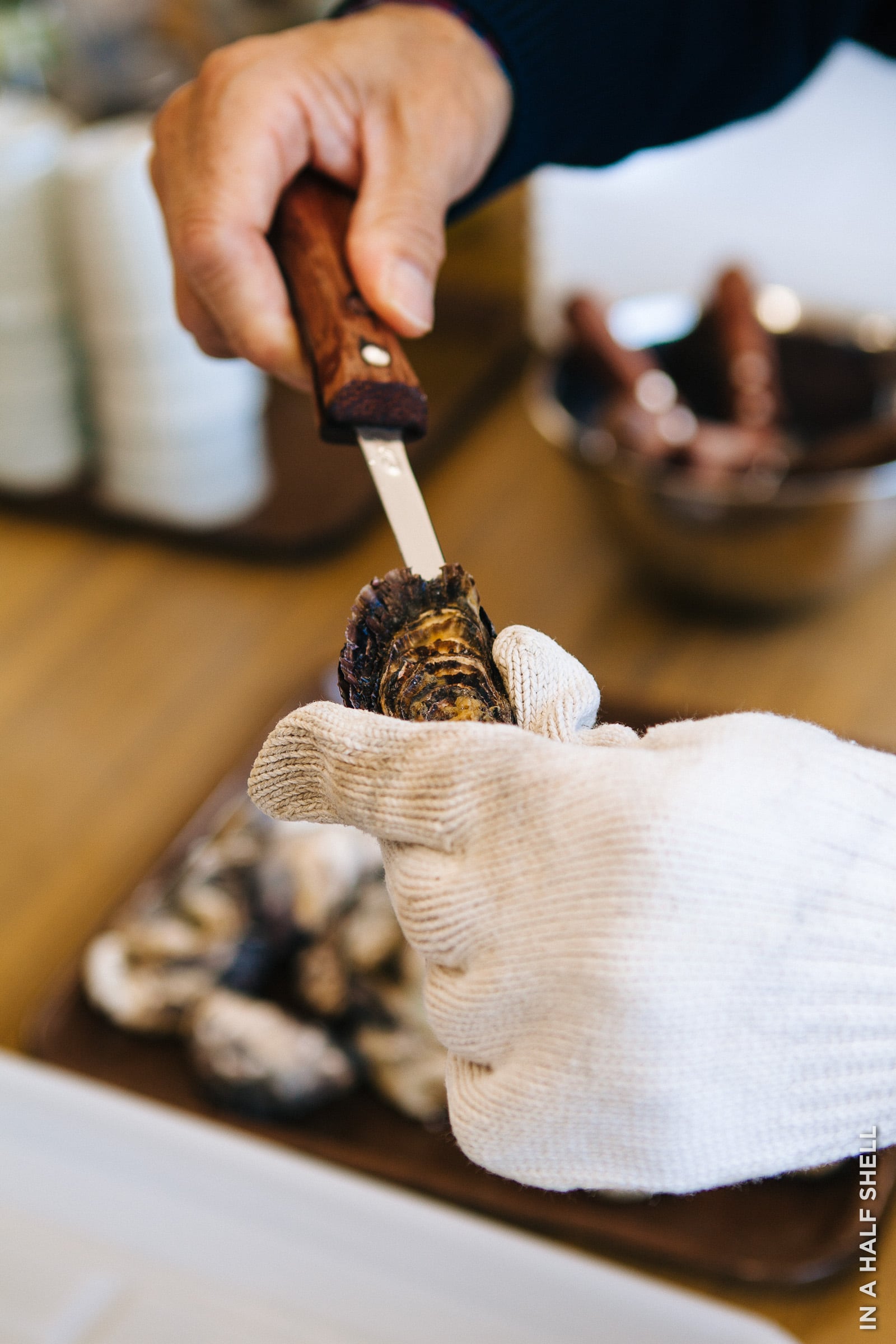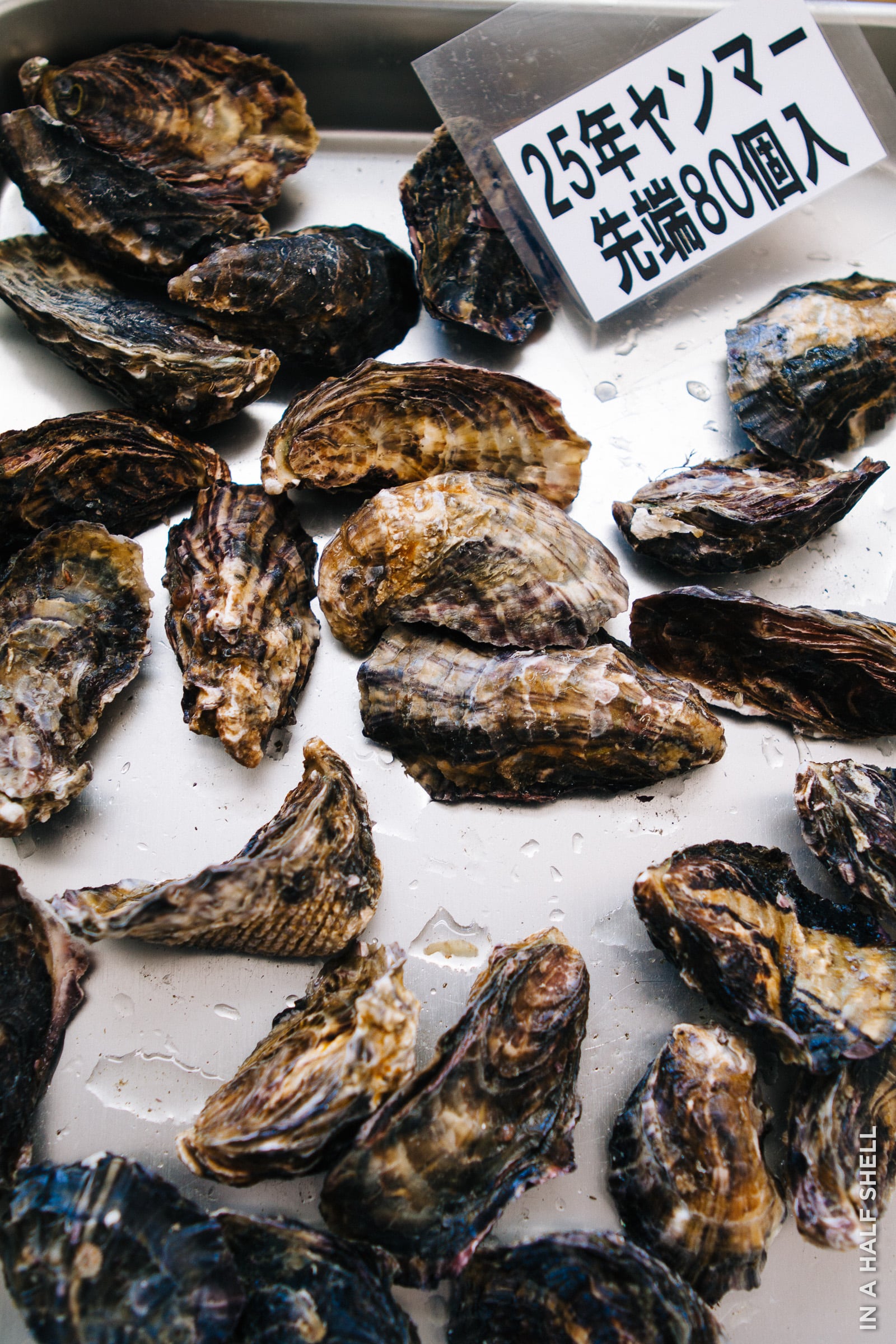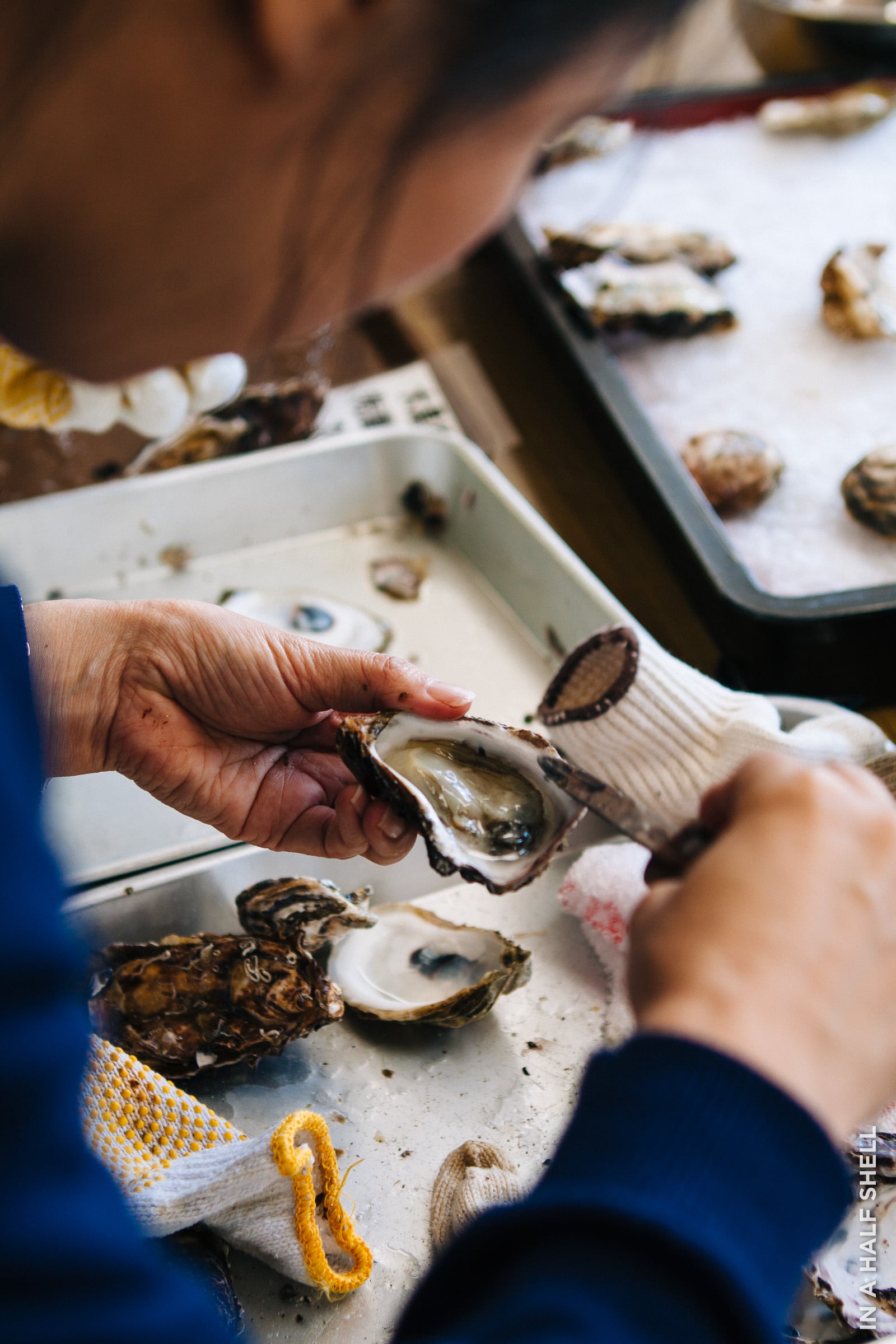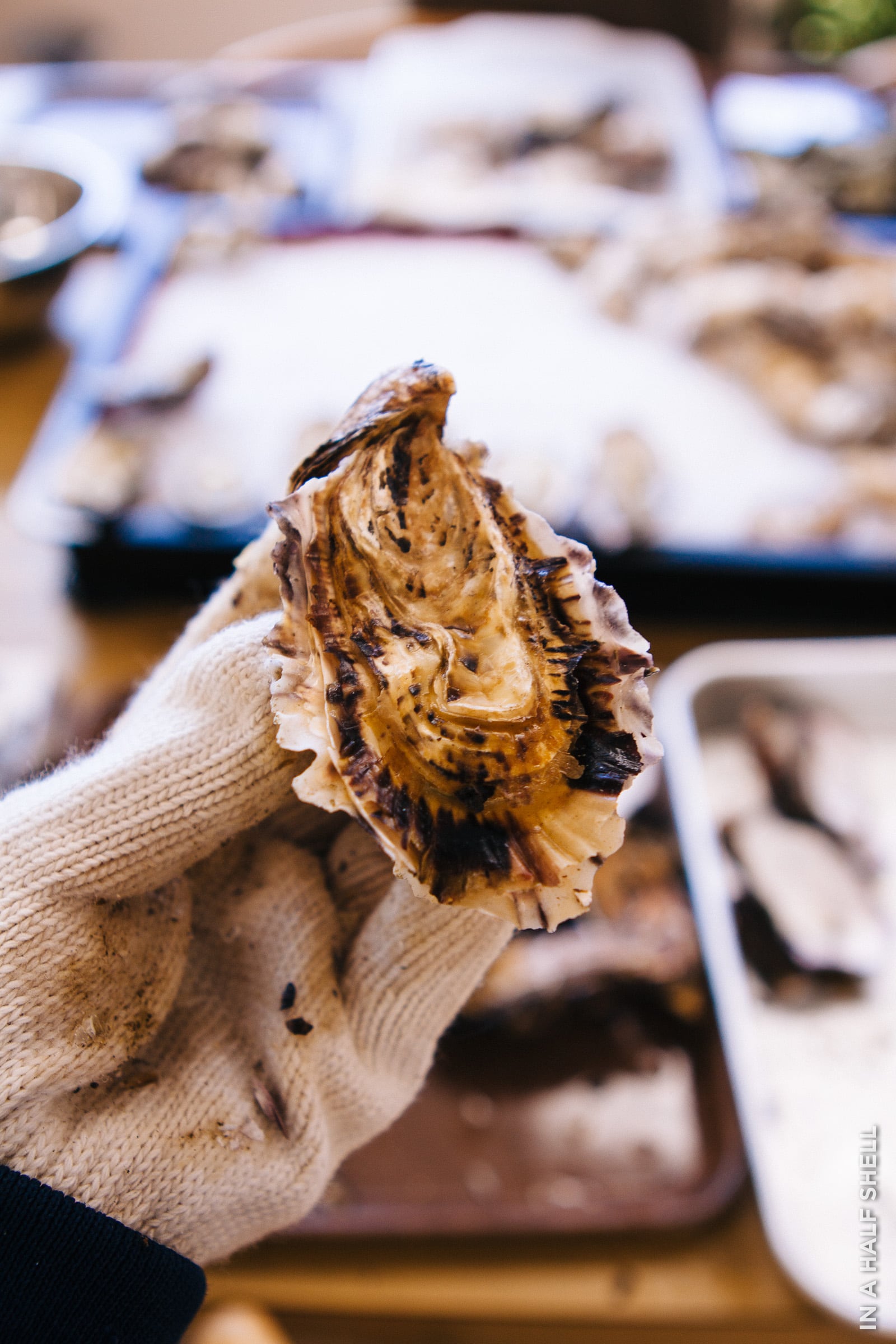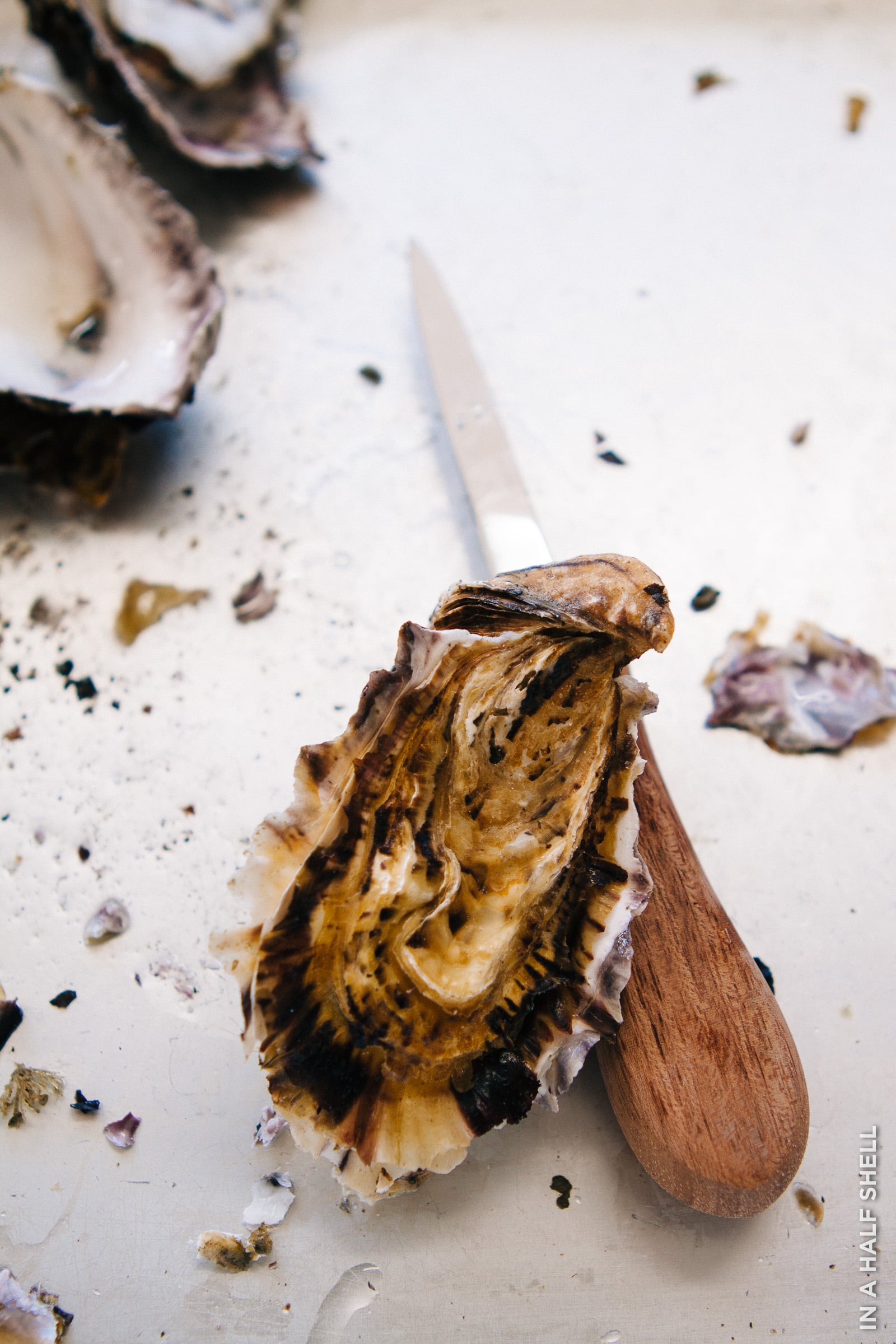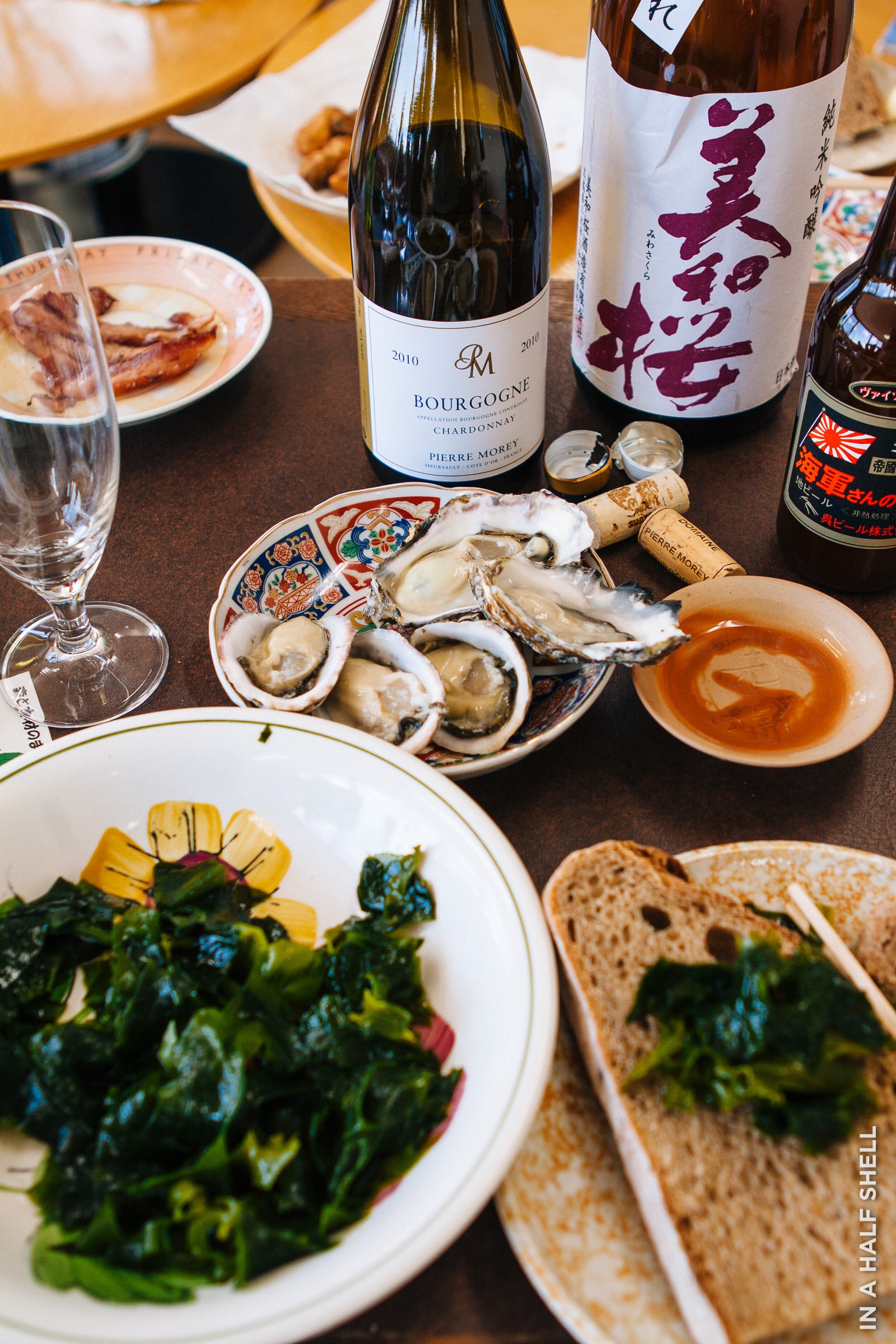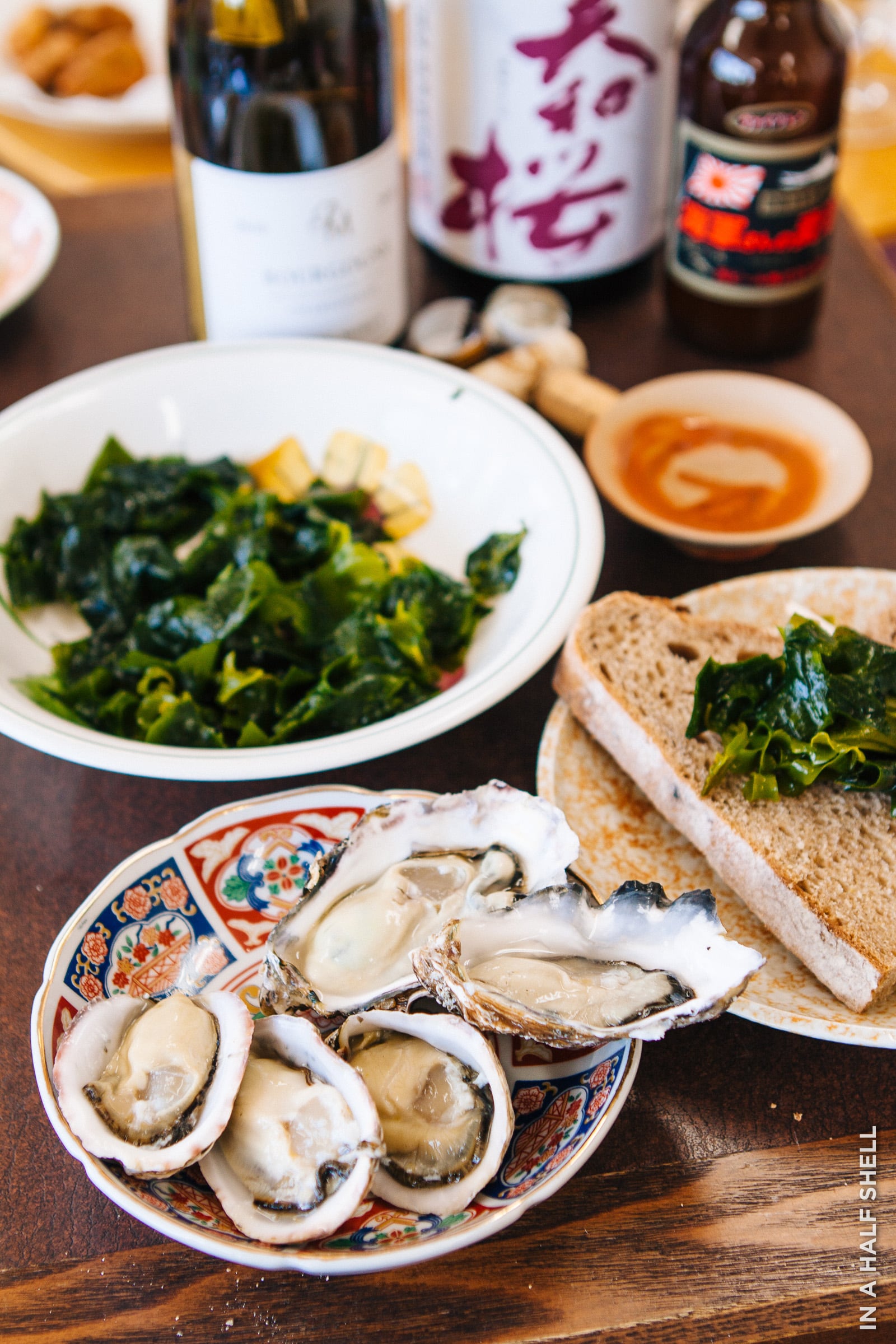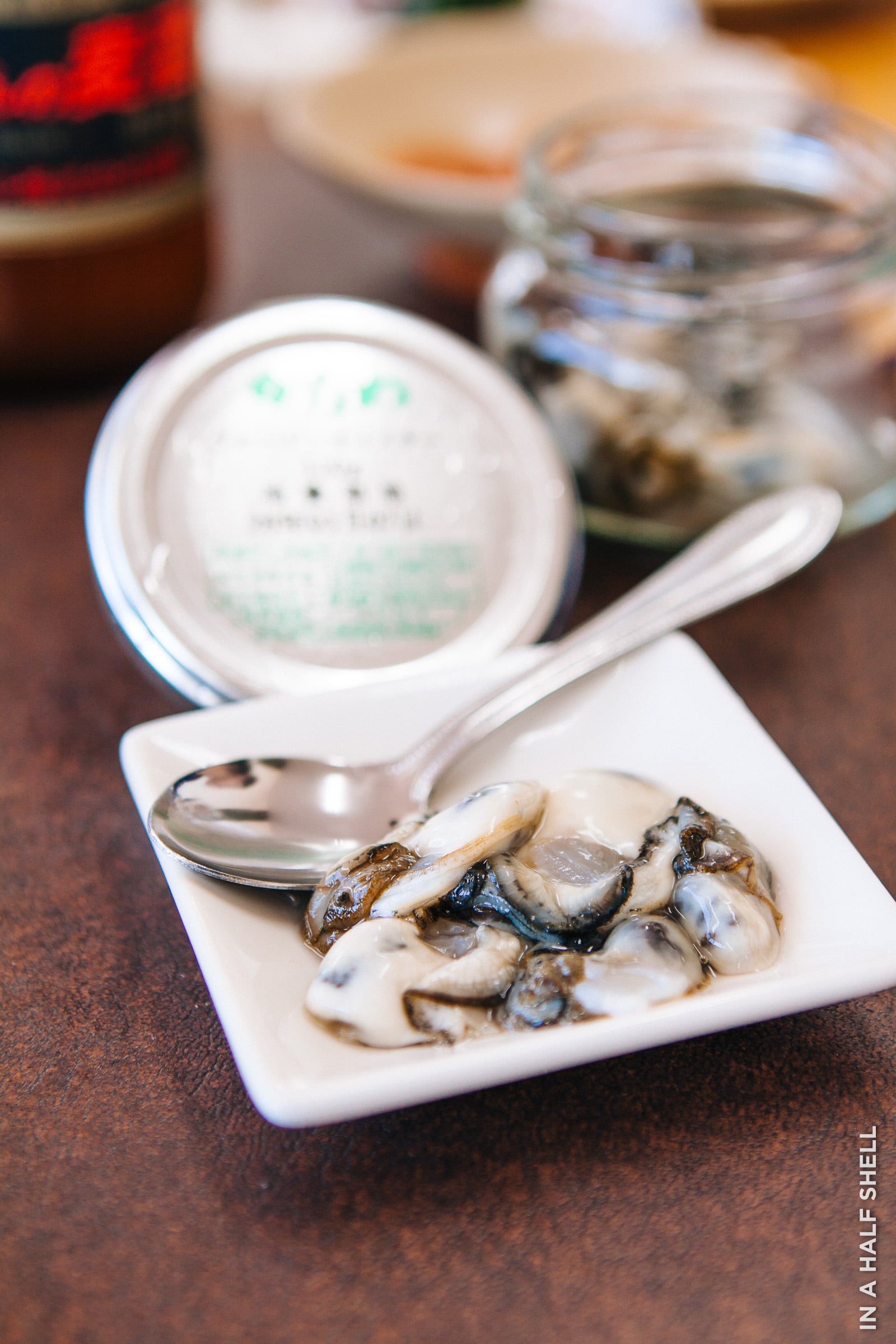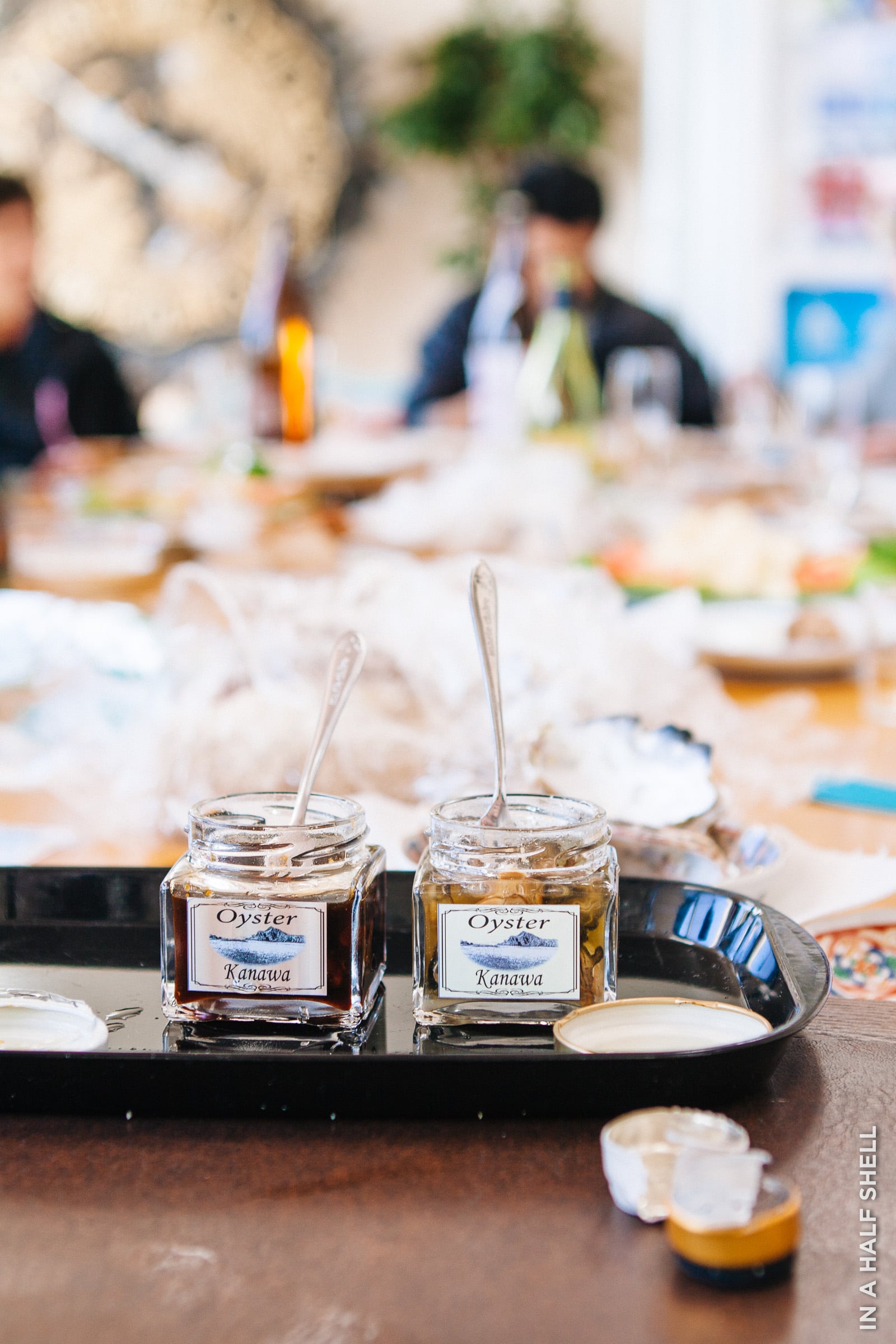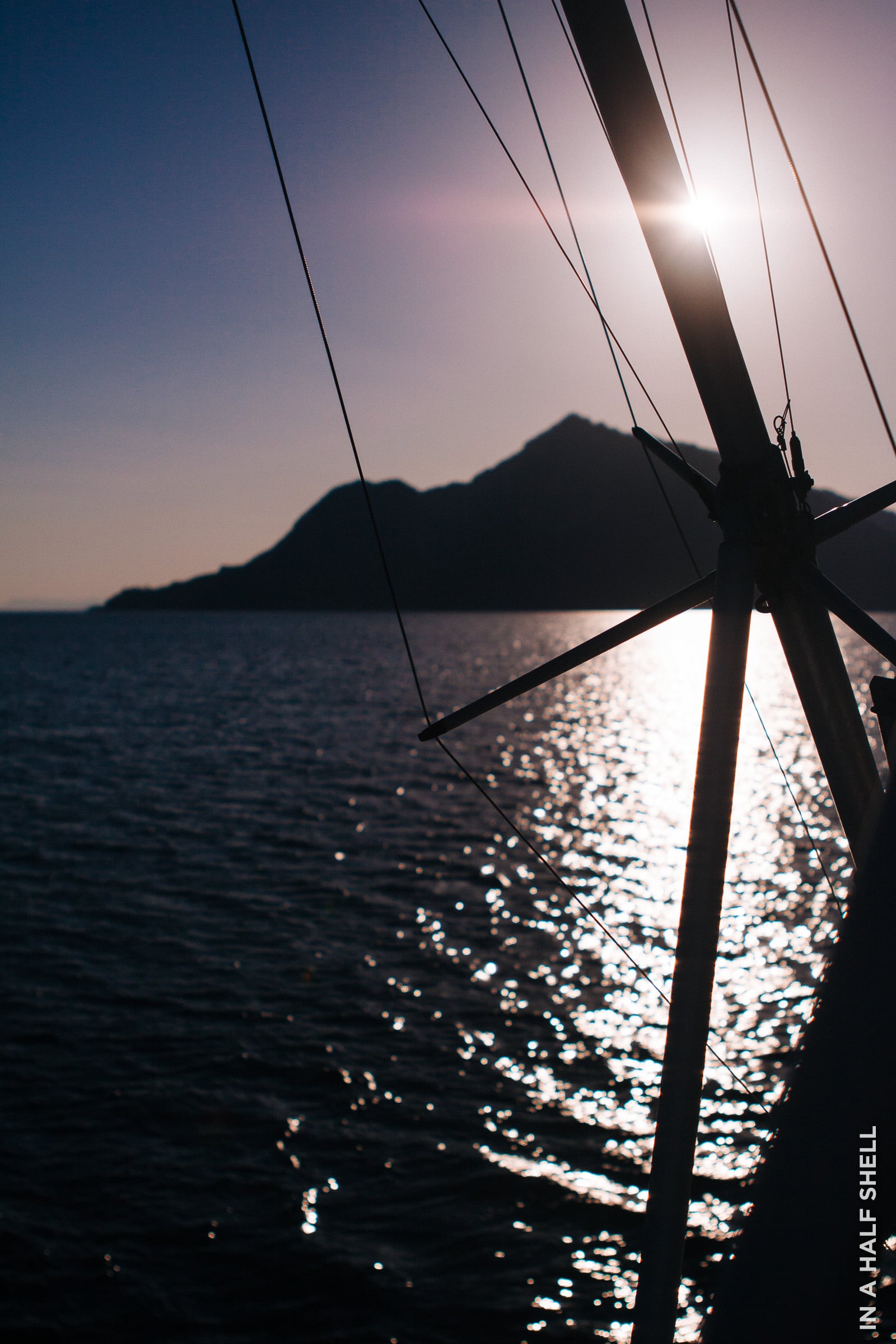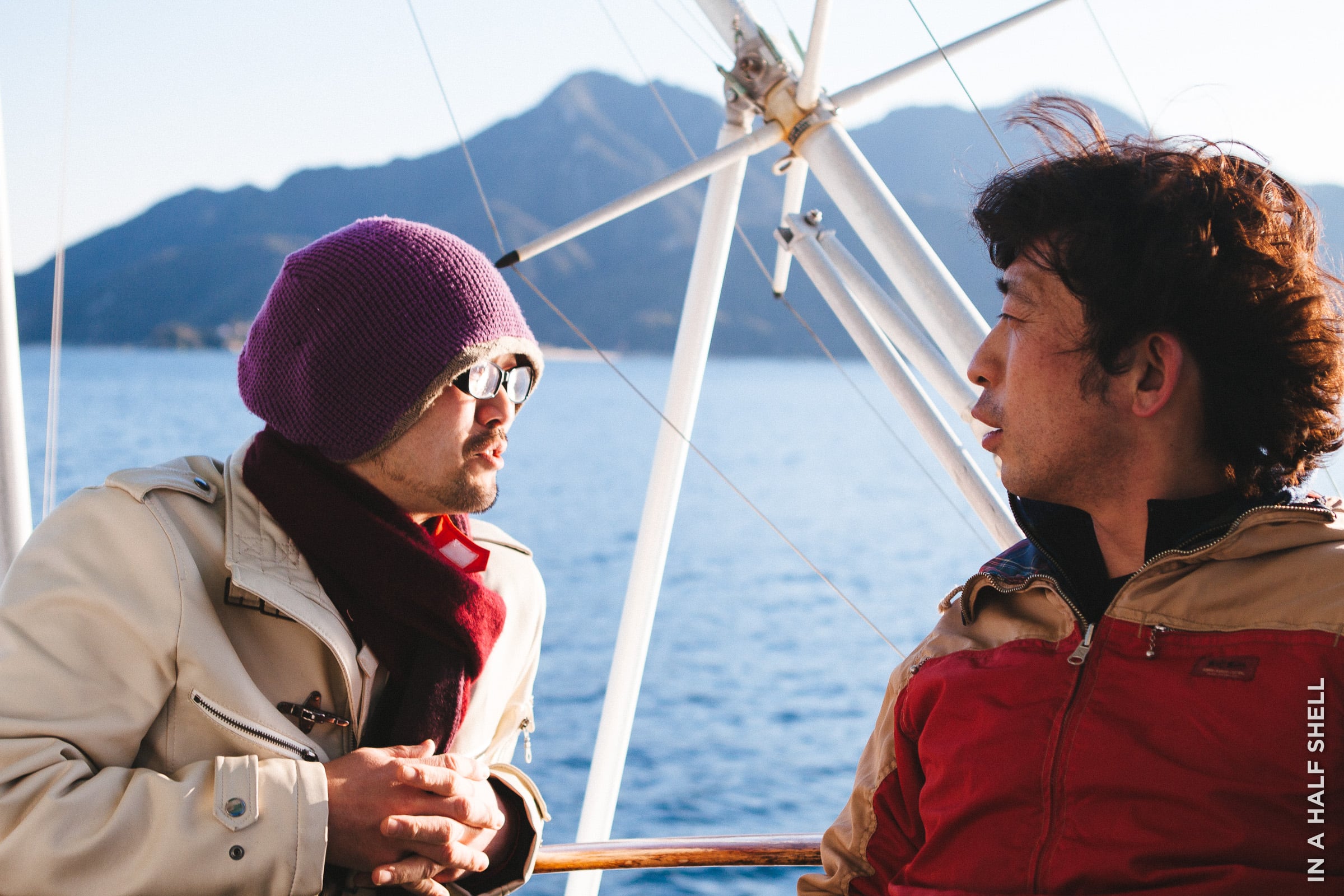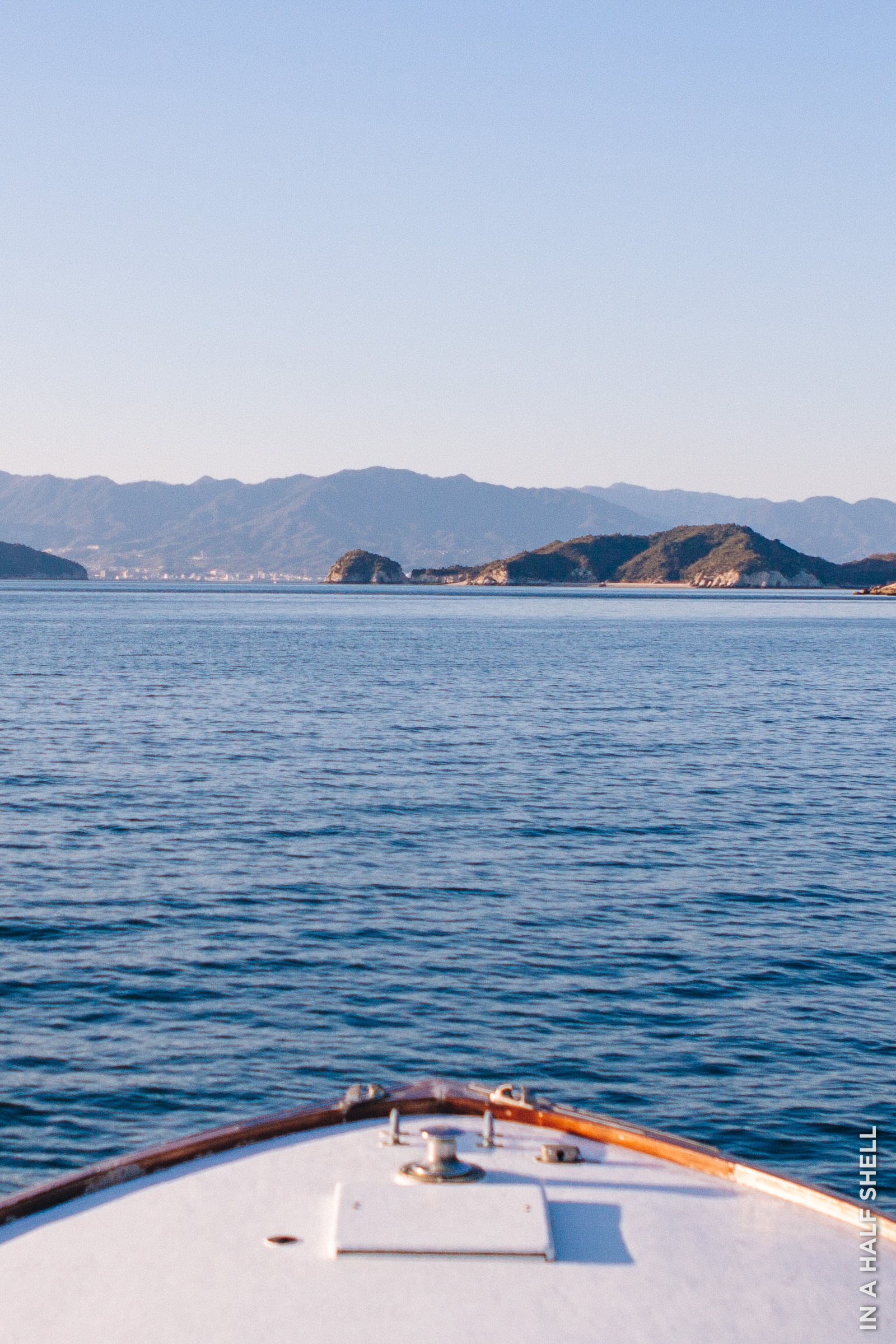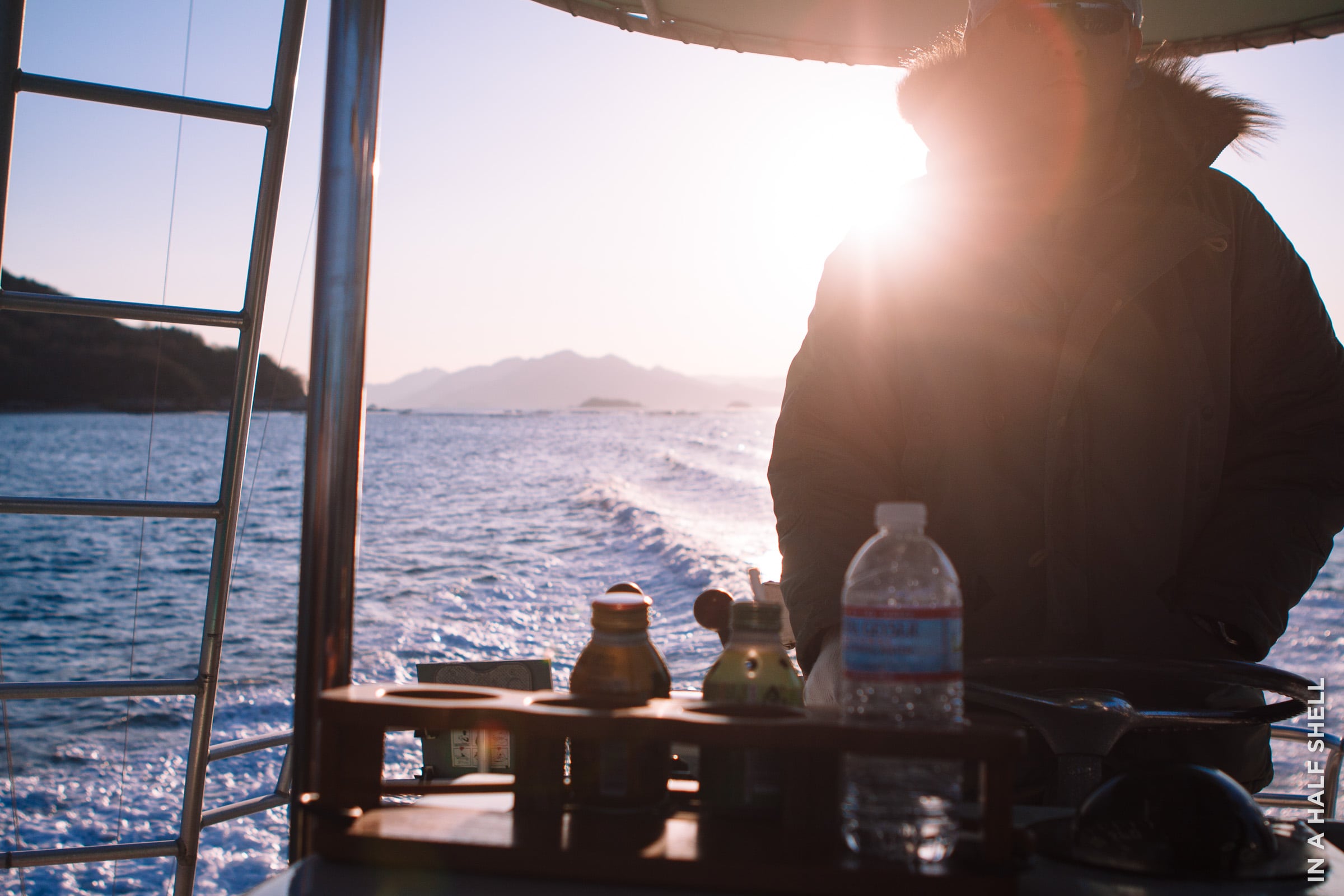Oysters of Japan: Hunting for Hidden Pearls in Hiroshima Bay
When we hear the name, “Hiroshima,” it’s unlikely that oysters would be first to come to mind. Surprisingly, Hiroshima has an astonishing oyster culture that dates back to the 16th century.
They boast the #1 oyster production region in Japan by volume and account for 60-70% of all oyster production in the country. In early March of 2014, I had the rare opportunity to tour one of Hiroshima’s most reputable oyster farms—Kanawa Suisan Company—and experience these delicious, hidden gems for myself.
On a brisk and bright Monday morning, I took the Shinkansen from Kyoto to Hiroshima. The train arrived on time, but I—who unwittingly exited on the wrong side of the station—was running late. Mr. Tatsuo Miho and a large, white passenger van of Japanese oyster bar owners and oyster enthusiasts were already waiting for me at the designated meeting point. As I hurry to board the van, while apologizing for my delay, I quickly realize that my broken Japanese, which got me by in Kyoto, isn't going to cut it here. Fortunately, a couple other tour-takers spoke brilliant English, and so I quickly clung onto them for linguistic support.
My mission for the day was to learn about the hidden pearls of Hiroshima Bay. Edible pearls. Well technically, not pearls at all. I mean live oysters. For me, these treasures are far more elusive and fascinating to behold than some mere baubles and beads.
Oyster Production in Japan
Mr. Miho starts up the van, while the rest of us exchange business cards. At one point along the ride, Mr. Miho points out to a low and flat block of industrial development. "That area used to be sea and mud flats. You can still find oyster shells around." Mr. Miho comes from an impressive lineage of oystermen. His ancestors have cultivated oysters for over 430 years, starting with his great, great, great grandfather. Back then, the farms were all located just off of the main island. In 1901, operations were moved further out due to the industrialization of Hiroshima Bay.
The roots of oyster farming in Hiroshima date back to the mid 16th century, with early experiments taking place between 1532 and 1555. The Hiroshima oysters enjoyed a splendid reputation in the Edo period (1603-1868) as they were traded over a large area, including Osaka. In those days, the cultivation method simply involved placing bundles of bamboo or twigs into the tidal mudflats. The oyster larvae would attach themselves to these branches, and could then be harvested after two or three years. Later in the 1920's, the method of suspending oysters from raised shelves placed over tidal flats became more popular.
The cultivation method that is currently used—suspending oysters in the sea from rafts—has largely amplified the region's productivity. In Japan, oysters are appreciated in every way imaginable: raw, grilled, deep-fried, baked, steamed, smoked, poached, fondued, and always with style. The shells were also said to be used for medicinal purposes and as pigment for Japanese-style painting.
The van comes to a stop and we unload our gear. We all quickly board a large deep-sea fishing boat and set off into open water. As a first time visitor to Hiroshima, I am immediately blown away by the beauty of the surrounding landscape. The cold and crisp sweet-salty air fills my lungs as the captain kicks the engine into high gear. Hiroshima Bay provides an ideal environment for growing oysters, in part due to the rich nutrients that enter this placid bay via river flow from the Chugoku Mountains.
As we glide further away from the city, I noticed the many clusters of floating racks in the water hugging nearby islands. There are dozens of oyster farms around the Inland Sea, which are all actually viewable by Google Earth. If you type in "Etajima Island Japan" in Google Maps, turn to Earth view and zoom out, you'll see the parallel slivers all around the area! The Kanawa farm was once here too, but they moved their operations in 1993 to the uninhabited Okurokami Island (shown below) to avoid the increasing pollution. Kanawa Suisan's adherence to food safety and quality is second to none, which you'll see more of later on.
Sentan a.k.a. Etajima Oysters
We pull up to a small floating dock and unboard into a long, flat oyster boat. Several meters away, a young Kanawa employee hoists a small blue bag of juvenile oysters out of the water. These 6-8-month-old Crassostrea Gigas oysters are known as "Sentan" oysters to the locals, however, are marketed as "Etajima" oysters abroad in places such as Hong Kong. "Sentan" means frontier in Japanese, and true to its namesake, these teenage oysters barely come across civilization at all during their lives.
In addition to the Sentan, Kanawa Suisan also produces a few other varieties of oysters. The ones labeled as "Hiroshima" take about 20 months to reach market size. The "Iwagaki" oyster is a local, native species (Crassostrea Nippona) and takes more than a year to mature.
Oyster Meisters
Once the Sentan oysters were on board the oyster boat, Mr. Miho decides to put us all to work... shucking. My companions have traveled from near and far for this special oyster farm tour. Nearly all of them are professionals in the oyster business. Some run oyster bars and restaurants in Hiroshima, while others are based in Tokyo and even farther. One restaurateur came all the way from Hokkaido, Japan's most northern island. As buyers of these oysters, this trip was more about business than pleasure for them.
Most, if not all of the oyster lovers with me belong to the Japan Oyster Association, and some are also part of an elite group known as the Oyster Meisters, created by uber oyster expert and evangelist Gen Sato. The title of "Oyster Meister" is the special qualification awarded to professional oyster handlers by the association. There are several tiers of Meister-ship: Jr Oyster Meisers (5877 members as of Feb 2014), Oyster Meisters (96), and Grand Oyster Meisters (13). The program is also expanding abroad, which I am beyond excited about.
Grand Oyster Meisters Hiro Yamamoto, owner of le trouvere (closed) in Hiroshima, and Shoko Izumi, owner of Kaki Bar in Tokyo shucking freshly plucked Sentan oysters from the sea.
First Taste: The Sentan Oyster
Hiro hands me my first Sentan oyster. It is gorgeous. The slender, pearlescent shell is beautifully fluted and very colorful. Its shell is painted with different hues of green and merlot, which fades into a deep purple along the rim.
The oyster liquor is very briny, just like the open sea. The meat itself is a swirl of complex notes: black tea, citrus, seaweed, and minerals. There was also a subtle vegetal quality that rolled into a lovely lingering, herbal finish.
Once everyone had the chance to slurp a few Sentans, we headed off to our next stop on the tour.
The Nursery
To help baby oysters get the best start in life, Kawana leverages a FLUPSY system or "Floating Upweller System," which is commonly used in the States. Once they reach a certain size, the baby oysters are moved into small cages near the shore to toughen up a bit. Once they reach an even larger size, and can fend for themselves, they're transferred into the suspended bags further out to sea.
All of the oyster seed that Kanawa depends on is wild set on scallop shells. There is no hatchery or algae laboratory. Just mother nature and a lot of hard work.
A Process Centered Around Quality
We arrive at the next stop on the tour: Kanawa Suisan's original oyster processing facility. All of the oysters are cleaned, graded, and purified here. A large stone engraving sits out in front, paying tribute to the oysters. Before heading inside, a facility manager hads each of us a pack of disposable white scrubs and shower caps. Although there are 400 oyster growers in the Hiroshima area, it is quite apparent that Kanawa Suisan is serious about oyster safety. In fact, my new oyster friends believes that Kanawa are the only ones with such rigorous safety measures.
Water quality is tested once a week for contaminants, although they haven't had an incident yet. Oysters are placed in a sterilization tank for 72 hours after they're harvested to ensure that all traces of pathogens are removed. Finally, individual oyster samples are retained for up to 2 weeks to ensure a well-logged record of what goes in and out. Kanawa is nationally recognized for producing the highest quality oysters, so taking precautions at every step is paramount.
Hiroshima Oyster Tasting
Our whirlwind tour around the Etajima and Okurakami Islands eventually land us at Kanawa's new processing facility. After walking through the shucked meats processing rooms (after undergoing a rigorous 9-step hand-washing station and a decontamination "wind tunnel" chamber) we entered a small kitchen and dining area. This fantastic little tasting room is flanked by long windows that look out over the bay. It was a breathtaking view, but we all were fixated on something else: the numerous trays of oysters of all shapes, sizes, and species on the table.
Mr. Miho welcomed us to the "interactive" part of the tour. A tasting of ten different varieties of oysters. I thought I had died and gone to heaven.
Shucking From the Bill
Mr. Miho put on a shucking glove and took an oyster in his hand. Instead of going through the hinge, he starts from the bill. That's how all Pacific oysters are shucked around here. The sharp, pointy knife blade is worked under the new shell growth of the oyster and then the adductor muscle is cut from that end. What's the reason behind using this method? I guessed that it was because of the shell shape. The hinges on some of the Hiroshima oysters were curved so inwardly, that they would be difficult to access. However, according to Mr. Miho, you're less likely to damage the oyster heart of this way. The shucker can also avoid the slime that builds up in and around the hinge, which is not hygienic if something bacteria came up though and onto the oyster via the knife. Quite smart and considerate if you think about it.
Oyster Food & Beverage Pairings
Once a good amount of oysters were shucked, it was time to eat! On a separate table, a spread of sake, beer, homemade bread, fresh vegetables, locally harvested seaweed called wakame and other special Kanawa products were waiting to be enjoyed.
The wakame seaweed supposedly grows right under the oyster lines, making it a really nice complimentary dish.
In addition to raw oysters, Kanawa also produces a few other prepared oyster products including a smoked oyster and a pickled oyster. However, my absolute favorite is the "Virgin" Oyster specialty jar. They're simply little baby oysters, no bigger than a teaspoon, in a glass container. They make for great toppings on other dishes, or in my case, enjoyed straight up. They kind of remind me of caviar in some ways. Very luxe, very precious. SUPER tasty.
A couple of ladies in the kitchen also brought out generous bowls of Kaki Meishi, or fried oyster rice. I can't begin to describe how delicious this rice was. The cooked oysters added a wonderful depth and texture to the rice.
Our group relaxing in the late afternoon sun for awhile, a little tipsy from the sake and high on oysters. As the shadows began to set in across the island, we knew it was time to head back. Mr. Nagura, our primary captain, smoothly us back to the harbor.
Kanawa Oyster Boat
Just when I thought that the magical Hiroshima oyster experience was over, there was more! Mr. Miho invited all of us to a special oyster-centric dinner at his brother's oyster boat restaurant. The restaurant is literally shaped like a party boat and "floats" on water. But unlike most boats, this vessel stays put (and the people move to it).
Captain of the Ship and Executive Chef, Mr. Yutaka Toda, prepared a series of delightful oyster courses for us to sample. One of the highlights was this oyster "boat" display of oysters done in 6 ways. Baked with butter, fermented (quite potent), smoked & cured, pureed into a paste, cheese-ified (don't know how else to describe it), and of course, wrapped in bacon. Another brilliant creation not shown here was a baked apple and cheese oyster "tart," which also contained aromatic Shimeji mushrooms.
"Kaki-OyCy!"
I'll leave you with this final fun thought. The Oyster Meisters have developed a oyster toast / photo opp known as the "Kaki-OyCy." Kaki means "oyster" and Oishii means "delicious" in Japanese. In photos, in-the-know oyster gurus will cup their hands into a C shape and say "Kaki OyCy" to express their fondness for this benevolent bivalve. Plus, the "Cy" sound (pronounced "Sea") helps to make you smile the same way as saying "chheeeeese" would. So the next time when you take an oyster #selfie, make sure you do a KakiOyCy!
Special Thanks & To Learn More
My day out in Hiroshima Bay with the Kanawa crew and Japan's most ardent oyster lovers was an experience of a lifetime. This amazing visit couldn't have been made possible without the hospitality and coordination of Mr. Miho, his son Kotaro, and Mayumi from the World Oyster Society. Thank you for your support, generosity, and patience! Also special thanks to Tomoko Braganza and Hiro Yamamoto for translating. I couldn't have understood anything (literally) without your help! Lastly, a gracious thanks to Mr. Nagura for saving my iPhone from certain disaster.
To learn more about Kanawa Suisan, visit their website.
To learn more about Oyster Meisters and Japan Oyster Association, visit their website and Facebook page.












